
Craters are a common sight on celestial bodies such as Mercury, Pluto, the Moon, Titan, and various satellites and asteroids in our solar system. These craters are evidence of the numerous meteorite and comet impacts that have occurred over time. However, unlike these other celestial bodies, Earth is fortunate to have an atmosphere that provides protection from most space invaders. The atmosphere causes these intruders to burn up before reaching the surface. Nevertheless, there are still instances where large and fast meteorites manage to break through and leave significant and lasting marks on our planet. In this article, we will explore some of the largest craters on Earth and discuss the meteorites responsible for their formation.
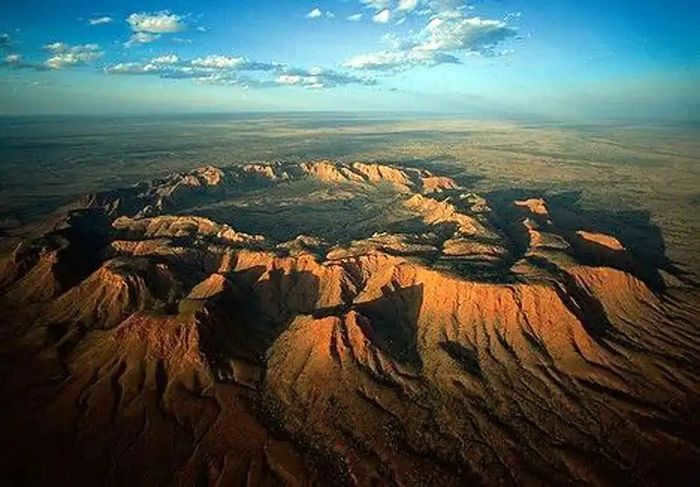
Before we can determine the location of the Earth’s largest crater, it is essential to comprehend the process by which craters form. Over the course of hundreds of years, many large meteorites have fallen, and it is only now, through satellite imagery and mineral analysis, that we are discovering these craters. In fact, folk tales have played a crucial role in locating some of these craters. Take, for instance, the Wolf Creek Crater in Australia, which has been preserved in the memories of the Aborigines for thousands of years.
The craters are significantly larger than the meteorites that caused them, emphasizing the sheer power of a cosmic body’s impact. When a meteorite plummets to Earth at incredible speeds, it unleashes an immense amount of energy. In fact, the most massive, dense, and fast meteorites are hundreds of times more potent than the most powerful nuclear bomb. The resulting shock wave generates millions of atmospheres of pressure, while the temperature at the center of impact surpasses that of the surface of the Sun, reaching a scorching 15,000 ° C! Such intense heat causes the rocks to instantaneously vaporize, transforming into plasma, which then explodes and propels the debris of the meteorite and shattered rocks across hundreds of kilometers.
Inside the scorching forge of the volcano, the liquified rocks mimic the behavior of fluids – a small ripple forms at the center of the collision (similar to the one that appears on the surface of water when a droplet falls), and even if the meteorite strikes at an oblique angle, the resulting crater will always have a circular shape. Additionally, the immense pressure gives rise to unique rocks known as impactites (derived from the English word “impact”). These impactites are incredibly dense and contain traces of meteoric iron, iridium, and gold. They often exhibit crystalline or glassy structures. Furthermore, the colossal meteorite impact is responsible for the creation of African impact diamonds, which possess the ability to cut through ordinary diamonds.
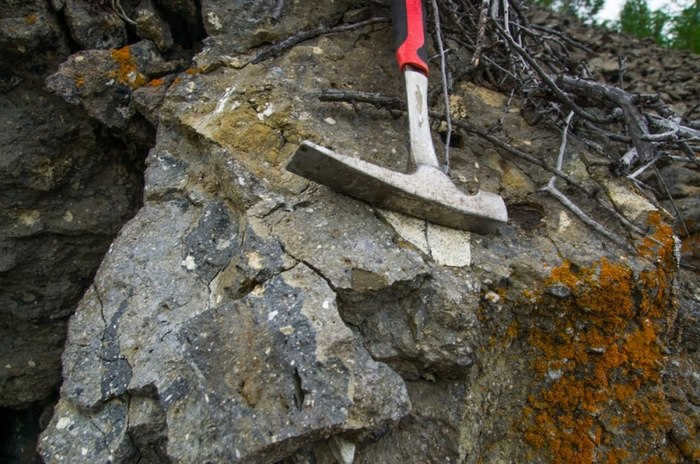
Scientists search for craters within these footprints. Some craters are easily visible to the general public, while others are more sensational – people have been unknowingly living in crater basins for centuries!
Australia is home to the world’s sixth largest crater, which is hidden in the southern part of the country. This crater was formed 590 million years ago and spans 45 kilometers. At the time of impact, the area was a shallow, warm sea inhabited by primitive mollusks and arthropods. The meteor impact scattered their remains and sedimentary rocks for hundreds of kilometers. Over the years, the outline of the crater has eroded, but it can still be clearly seen in satellite images.
Although Arkaman may not appear as imposing as its smaller counterparts, a significant portion of its landscape is taken up by the seasonal lake that shares its name. This lake dries up during the hotter months. However, 590 million years ago, a cataclysmic event occurred that would forever change the face of Arkaman. A massive meteorite, measuring 4 km in diameter, collided with the planet. This extraterrestrial visitor was composed of chondrite, a type of meteorite closely related to Earth’s granite. Upon impact, the Arkaman meteorite unleashed a tremendous explosion, equivalent to 5200 gigatons of force. This is comparable to the combined power of the world’s entire nuclear arsenal. The resulting shockwave was so intense that it produced a deafening thunder, reaching a staggering 110dB. Even at a distance of 300 kilometers from the impact site, this thunderous sound was both ear-splitting and capable of causing hearing damage. Furthermore, a powerful wind squall, reaching speeds of 357 m/s, swept through the area. This wind was strong enough to potentially topple even the tallest skyscrapers!
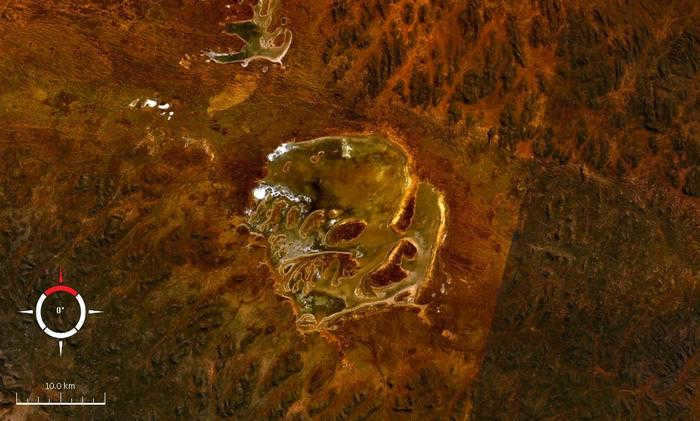
Located in the Quebec province of Canada, the Manicouagan Crater is a remarkable and picturesque example of a large crater. Stretching 50 kilometers from its center to its outer edges, this crater is home to the stunning circular Lake Manicouagan, which surrounds a central island. Formed approximately 215 million years ago during the Triassic period, the Manicouagan Crater was created by a 5-kilometer asteroid. The impact of this meteorite, with an estimated power of 7 teratons, is believed to have caused a mass extinction event for the animals of that time.
Manicuagan crater has siblings scattered across the globe – experts speculate that during that era, there was an entire meteor shower. Potential “siblings” include the Obolonsky crater in Ukraine, the Red Wing crater in North Dakota, and the St. Martin crater in the Canadian Matoba. They form a chain, seemingly created by a colossal asteroid that fragmented or by a group of asteroids. However, conclusive evidence still remains elusive.
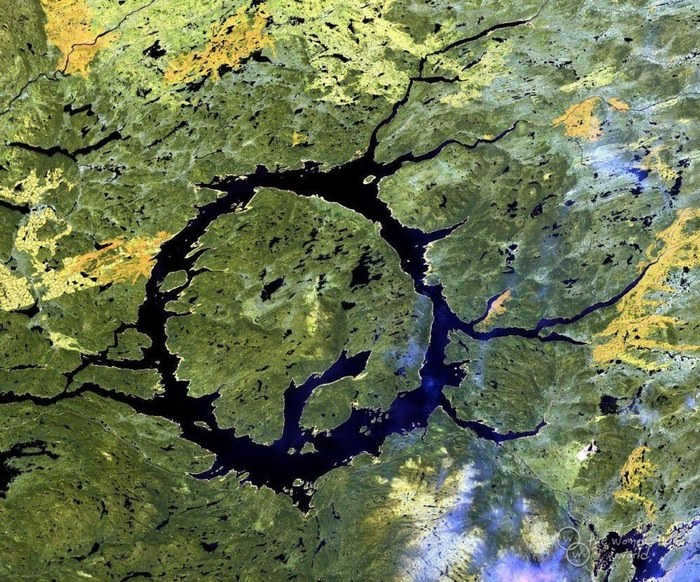
The Popigai crater, situated in northern Siberia, is the largest evidence of a meteorite impact in modern-day Russia. With a diameter of approximately 100 kilometers, it is home to the village of Popigai, which has a population of around 340 individuals and is located just 30 kilometers away from the center of the crater. This immense crater was formed by an 8-kilometer chondritic meteorite that crashed onto the Eurasian landmass about 37 million years ago.
The impact of the asteroid resulted in the formation of a unique feature – the presence of impact diamonds within a 13.6 kilometer radius from the site of impact. These diamonds, known as “meteorite” diamonds, have formed from the transformation of graphite deposits that were present beneath the surface. Although they are relatively small, with diameters of up to 1 cm, they possess remarkable durability that surpasses even the strongest synthetic diamonds. While they may not be suitable for use in jewelry, their strength makes them highly valuable in industrial and scientific applications. Similar to the Manicuagan Crater, the Popigaya Crater also exhibits evidence of meteorite bombardment, suggesting that these meteorites may have played a role in a global cooling event that led to the dominance of large and complex mammals, including the ancestors of modern dogs, lions, elephants, and horses.
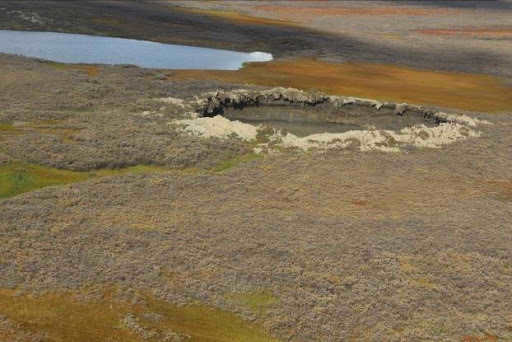
The Mayan language gives the Chicxulub crater, situated in northwestern South America, a foreboding title – the “devil of ticks.” However, this name not only refers to the parasites that have infested the nearby forests for centuries but also holds a deeper significance. Scientists believe that the Chicxulub meteorite impact 66 million years ago was the catastrophic event that wiped out the dinosaurs and caused a mass extinction.
The impact left an astonishing mark – the size of the crater measures 180 kilometers in diameter, spanning across both land and sea, and reaching a staggering depth of 20 kilometers! The meteorite explosion released a force of 100,000 megatons; even the Tsar Bomba, the most powerful thermonuclear charge in existence, pales in comparison, delivering only a fraction of a percent of the total energy unleashed by the Chicxulub meteorite. The aftermath of such a cataclysmic event resulted in volcanic eruptions on the opposite side of the globe, with massive amounts of rock – approximately 200,000 cubic kilometers – ejected into the atmosphere, while fiery winds ignited forests in their wake.
Earthquakes, tsunamis, and volcanic eruptions were all consequences of the impact that formed the Chicxulub crater, which had a long-lasting effect on the Earth’s climate. Interestingly, the meteorite responsible for this event is believed to belong to the Baptistina family of asteroids. This group frequently intersects with our planet’s orbit, and another notable trace of the family can be found in the form of the Tycho crater on the Moon. However, these are all just theories, and the definitive blame for the extinction of the dinosaurs can only be assigned once spacecrafts bring back samples of the asteroid’s soil.
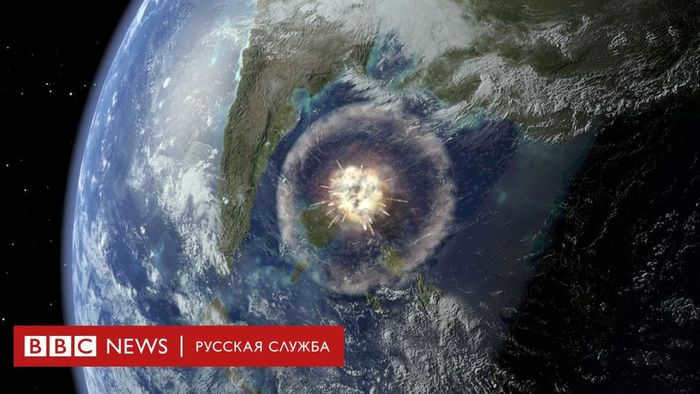
It is an intriguing fact that the circular Chicxulub basin, resembling a crater, was not initially discovered through scientific research. The symmetrical rings on both the continent and ocean floor were first identified by oil prospectors, who also found evidence of impact seals.
Canada has been fortunate enough to be home to several craters. Sudbury, the second largest crater in the world, stretches across a distance of 250 kilometers and is located in the Canadian province of Ontario. This crater was formed during the Paleoproteozoic Era, approximately 1.849 billion years ago. Over time, the original crater has eroded, resulting in a massive valley that is now 62 kilometers long, 30 kilometers wide, and 15 kilometers deep. The impact that created this funnel-shaped structure is believed to have been caused by an asteroid with a radius of 7.5 kilometers, according to modern estimates.
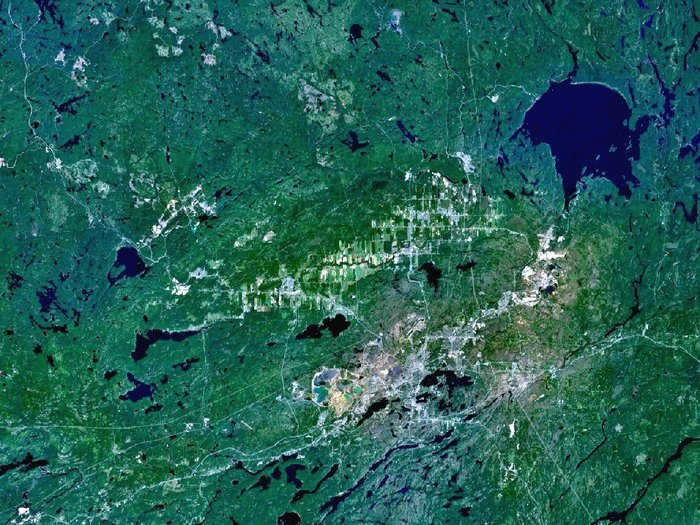
The Vredefort Crater in South Africa is the largest crater on Earth, with a diameter of 300 kilometers. It was formed by a meteorite estimated to be less than 20 kilometers in size. This crater is not only the largest, but also the second oldest, dating back 2.023 billion years. The Suavjärvi crater in Russia holds the title of the oldest crater, with an age of 2.3 billion years.
The size of the Vredefort crater is so immense that it has the capacity to accommodate multiple small European nations. It possesses a series of concentric rings that have been preserved solely as a result of exceedingly forceful impacts, a rarity on Earth due to the constant movement of tectonic plates and erosion. This fortunate positioning has contributed to the preservation of Vredefort – the central depression resulting from the impact remains prominently visible. Similar to other meteorite craters, precious minerals, particularly gold, can be found within its boundaries. At present, however, the crater is primarily inhabited by farmers, with the town of Vredefort serving as the focal point of the community, nestled right in the heart of the crater.
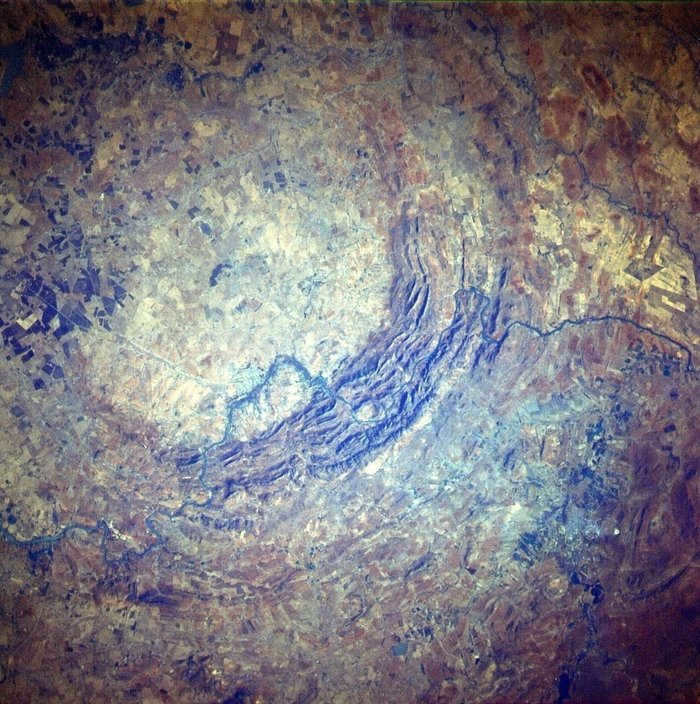
In theory, there could be even larger craters on Earth. For example, beneath the ice of Antarctica, there is believed to be a 540-kilometer crater resulting from the impact of an asteroid. Additionally, it is possible that the Caribbean Sea and other bodies of water were also formed by meteorites. However, confirming these theories will require advancements in technology for scanning deep soil and underwater exploration. Historically, it has been miners and oil workers who have stumbled upon these ancient craters. Therefore, it is important to keep an eye on their discoveries as well as the findings of scientists.

14.9K posts 45.3K subscribers
Community guidelines
What guidelines can exist here, except for the guidelines established by the peekaboo itself 🙂
For instance, the Aboriginal people have preserved the history of Wolf Creek Crater in Australia in their memory, despite thousands of years having passed since its formation.
This crater came into existence 300,000 years ago.
Humans arrived in Australia 50,000 years ago.
There are reasonable doubts that anything other than their own theories could have endured in the Aboriginal memory.
The impact of the asteroid has bestowed upon the crater a unique characteristic – the graphite deposits beneath its surface have transformed into impact diamonds. These diamonds can be found within a 13.6-kilometer radius of the impact site, but they are relatively small, measuring up to one centimeter in diameter, and therefore not suitable for use in jewelry.
I’m also tired of diamonds, particularly because they are always so minuscule, never exceeding a size of 1 cm. I’ve been searching for a regular-sized diamond that is at least 10 cm in diameter, but I haven’t had any luck so far 🙂
There is actually a specific term for these small diamonds – Astroblems.
We happen to have the Ashap crater in close proximity.
Furthermore, approximately half of the Perm region is encompassed by the Middle Urals ring structure, which has a diameter of 550 km and is likely also an astroblem.
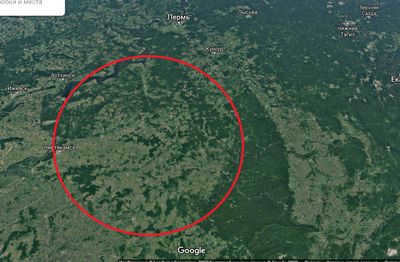
This image captures the rim of the Popigai crater.
The photograph was captured in August 2016.
About precious gemstones. These objects are all bicycles. There are definitely two reserves present, but the impact diamonds possess technical properties.
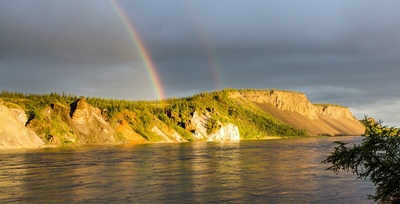
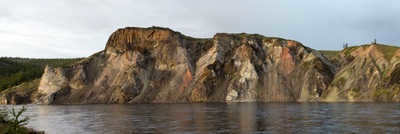


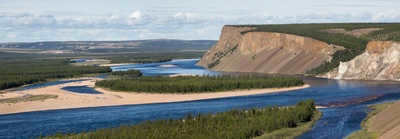
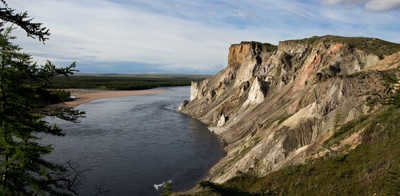

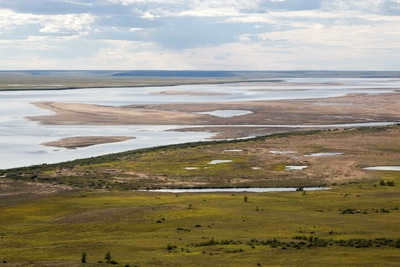
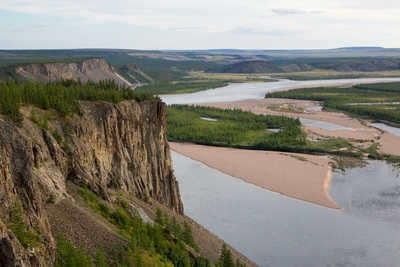
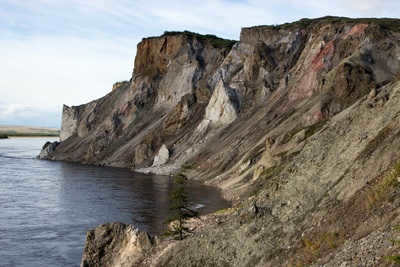

How to Recognize a Meteorite: The Composition of Meteorites – Dmitry Sadilenko – Sciencepop
How can we identify a meteorite? What are the characteristics we should look for, such as shape, structure, and color? And what exactly is meteoritic matter made of and how is it structured? Are there any elements or compounds in meteorites that are not commonly found on Earth? Is every meteorite magnetic? What is the typical composition of meteorites? Additionally, what are chondrules, regmaglypts, fusion crust, impact melt veins, and widmannstetten structure, and how do they help us differentiate between a meteorite and other types of rocks like slag or iron ore? Dmitry Sadilenko, a junior researcher at the Laboratory of Meteoritics at GEOHI RAS, provides answers to these questions and more in his mini-lecture on meteoritics.

6 of the most significant impact craters on our planet
Lately, there has been a surge in the circulation of artistic depictions of the Chikshulub crater accompanied by the headline “STUNNING PHOTOGRAPHY OF A COSMIC CRATER.” These fake images inspired me to create this post.
Presently, there are 281 confirmed impact craters on Earth, with an additional 2700 potential sites awaiting verification. However, in this article, we will only discuss the six largest and oldest craters on our planet.
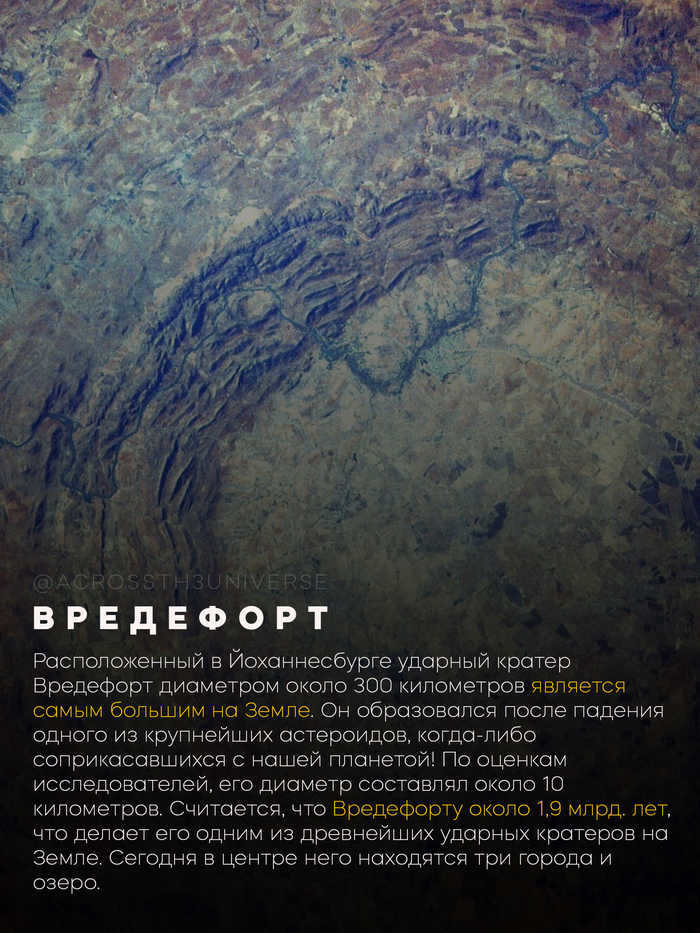
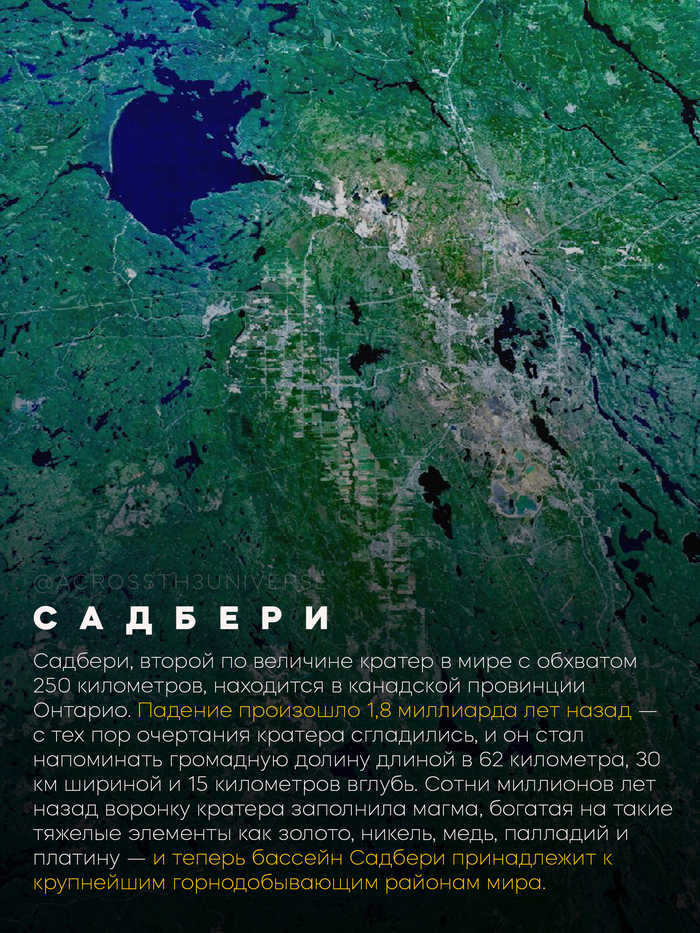
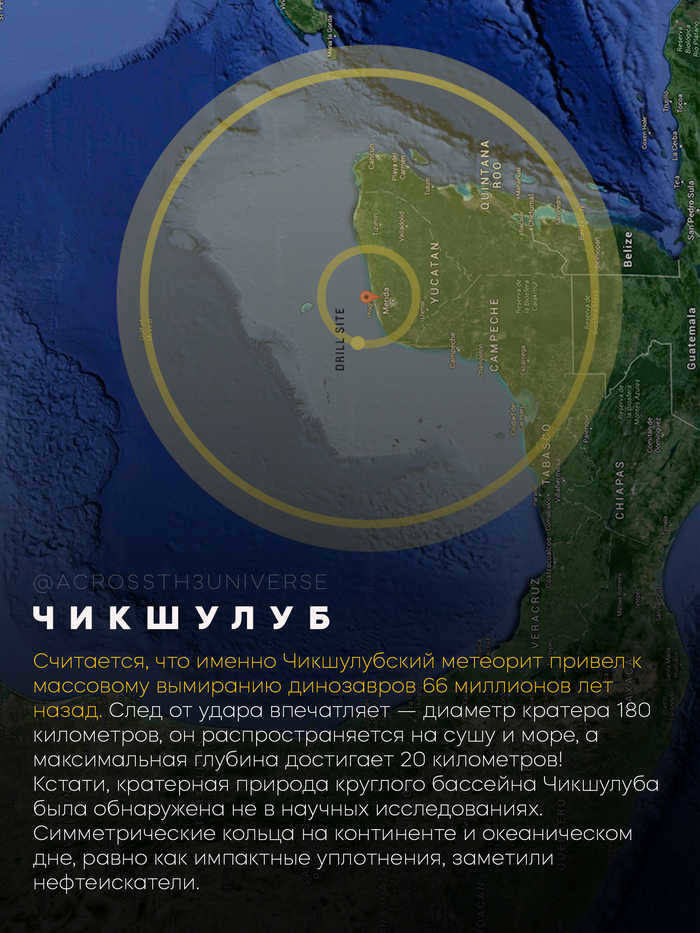
And here is the exact sketch that is often misrepresented as a genuine photograph:
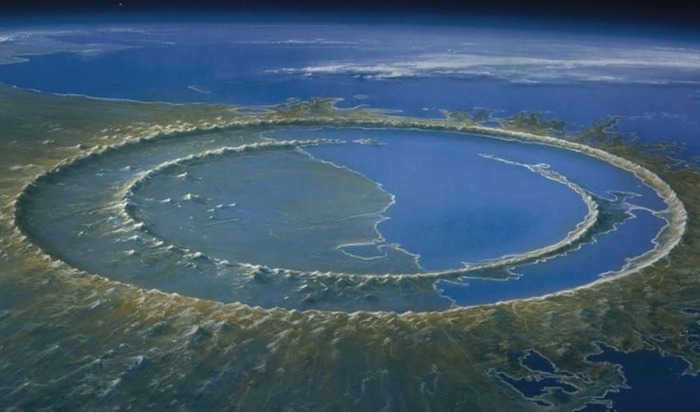
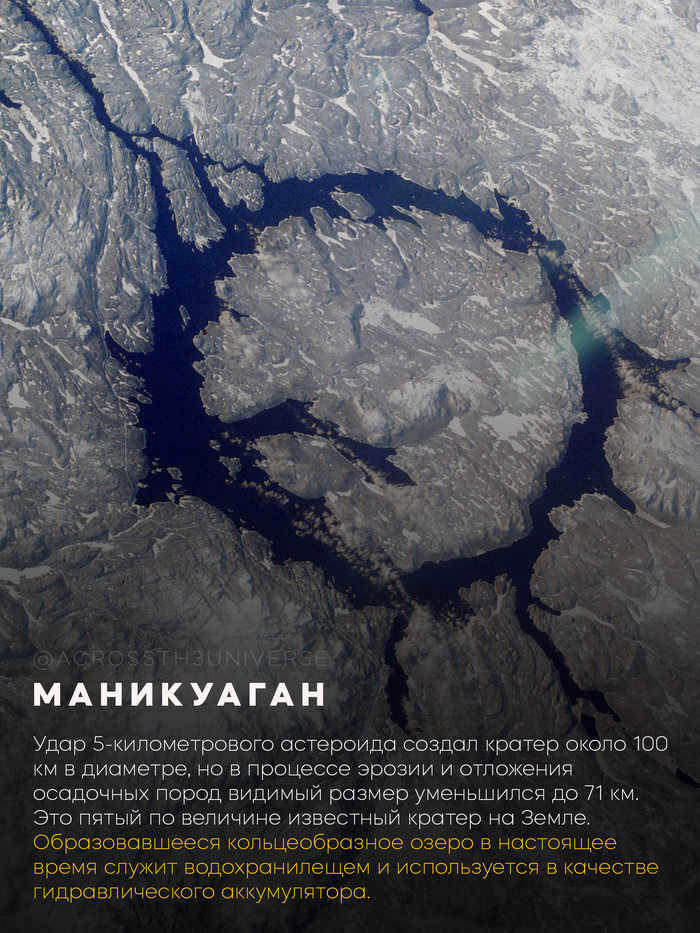
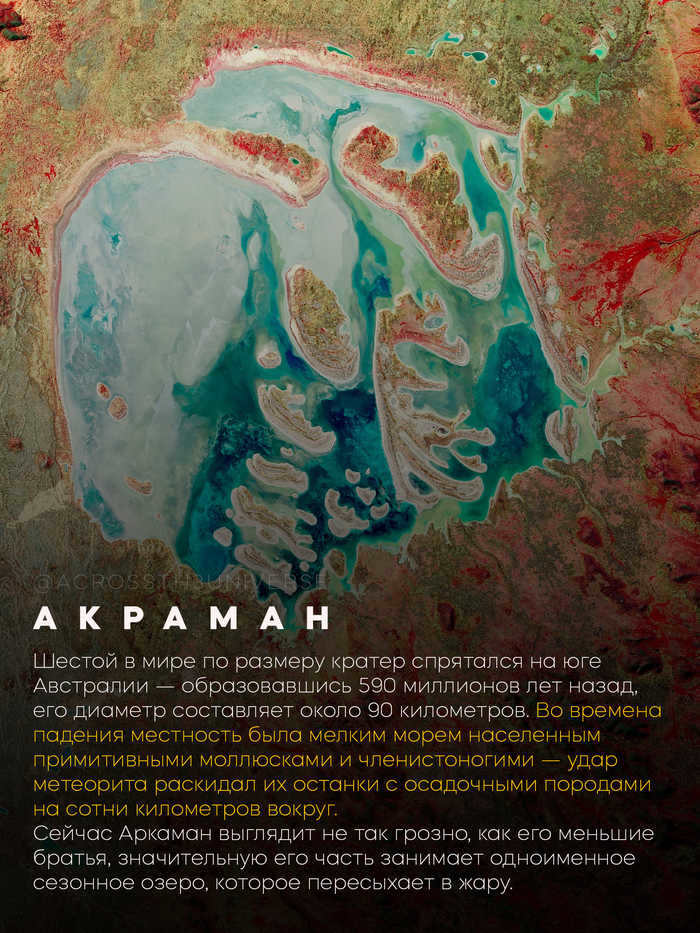

Dmitry Sadilenko – Undifferentiated meteorites
What are the categories of meteorites? Why is it more scientifically accurate to classify meteorites not as stone, iron-stone, and iron, but as undifferentiated and differentiated meteorites? What are undifferentiated meteorites (chondrites) and what do they consist of?
Dmitry Sadilenko, a junior researcher at the Laboratory of Meteoritics GEOKhI RAS, explains.
Renaissance genius

Cardano wrote numerous treatises on various subjects, including music and household management. His young and curious mind eagerly absorbed the knowledge of the scientific advancements of his era.
Cardano attended universities in Pavia and Padua, where he earned his Doctor of Medicine degree at a young age of 23. Shortly after, he was elected as the rector of the renowned University of Padua. It was during this time that his interest in mathematics grew, leading to his appointment as a professor in Milan in 1534, followed by a position in Bologna. Despite his successful medical career, Cardano’s true passion lay in mathematics and the sciences. He even continued to practice medicine, catering to the Italian nobility and even creating horoscopes for them. Cardano held a deep belief in astrology, much like how children believe in Santa Claus. According to legend, Cardano even predicted his own death using the stars and, to validate his prediction, took his own life.
The famous device, known as the gimbal, was invented in 1541 by Cardano, who at the time was the rector of the city’s College of Physicians. He was honored with the opportunity to meet the Spanish King Charles V and even walked by the royal canopy. Inspired by this display of respect, Cardano proposed equipping the crown prince’s carriage with a suspension system consisting of two rotating shafts that would keep the carriage level. Although the concept of such a suspension had been known for some time and was even mentioned in Leonardo da Vinci’s “Atlantic Code,” it wasn’t until two centuries later that educated individuals had the chance to become familiar with this information. From then on, this type of suspension began to be widely used in various forms and became an integral part of technology, thanks to Cardano’s innovation.
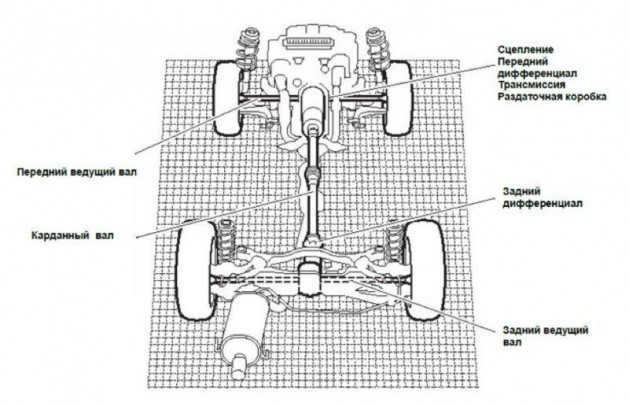
Cardano made a significant contribution to the field of cryptography by creating a basic encryption tool known as “Cardano’s grid” (a square consisting of empty squares).
For more information on Cardano’s Lattice, visit this link.

Cardano faced numerous challenges during the final years of his life. In 1560, his eldest son was found guilty and executed after being accused of poisoning his wife. The son’s actions were driven by jealousy, as he suspected his wife of infidelity. Meanwhile, Cardano’s younger offspring developed a gambling addiction and resorted to stealing money from his own father. As for Cardano himself, his deep fascination with astrology led to accusations of heresy. He was imprisoned for several months and spent the remainder of his life in Rome, desperately seeking a pardon from the Pope.

The Solar System
By the time a person reaches 80 years old, the effects of time and natural processes become evident on their face. The lines around the eyes and lips bear the imprints of smiles and expressions of anger. Wrinkles on the forehead are a result of exposure to the sun. Scars from chicken pox and marks from blackheads serve as reminders of past skin conditions. Similarly, the age of the planets and their moons can be seen in their ancient appearance.
Meteorites, Impact Craters, and Planetary Surfaces
These celestial bodies are estimated to be 4.6 billion years old. Over time, numerous events have altered their appearance. The Earth’s crust is composed of massive tectonic plates that collide with each other, giving rise to towering mountain ranges along the collision zone. Volcanoes, acting as conduits for hot molten rock known as magma, unleash their fury from the planet’s core, resulting in the formation of distinctive conical volcanic mountains. In the presence of an atmosphere, the relentless forces of wind and rain gradually erode the rocks and transport sand particles high into the sky.
Fascinating tidbit: When a meteorite crashes into mountains, the intense heat generated by the impact can cause the surrounding rocks to melt.
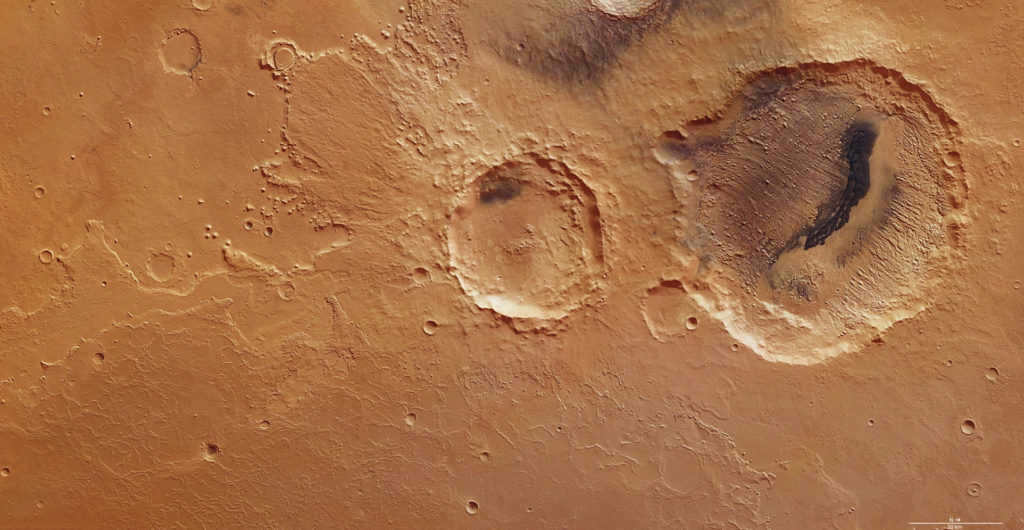
The surface of the planet can also undergo significant changes due to violent disturbances from outer space. Space objects like asteroids, comets, or their fragments known as meteorites can unexpectedly make their way to our planet, wreaking havoc along their trajectory. When a meteorite directly collides with the Earth’s or another planet’s surface, scientists refer to it as impact cratering. Such impacts can result in extensive damage to the affected planet’s surface. For instance, a meteorite measuring 30 meters in diameter and traveling at a speed of 55,000 kilometers per hour would generate an explosion equivalent to the detonation of 4 million tons of dynamite or multiple atomic bombs.
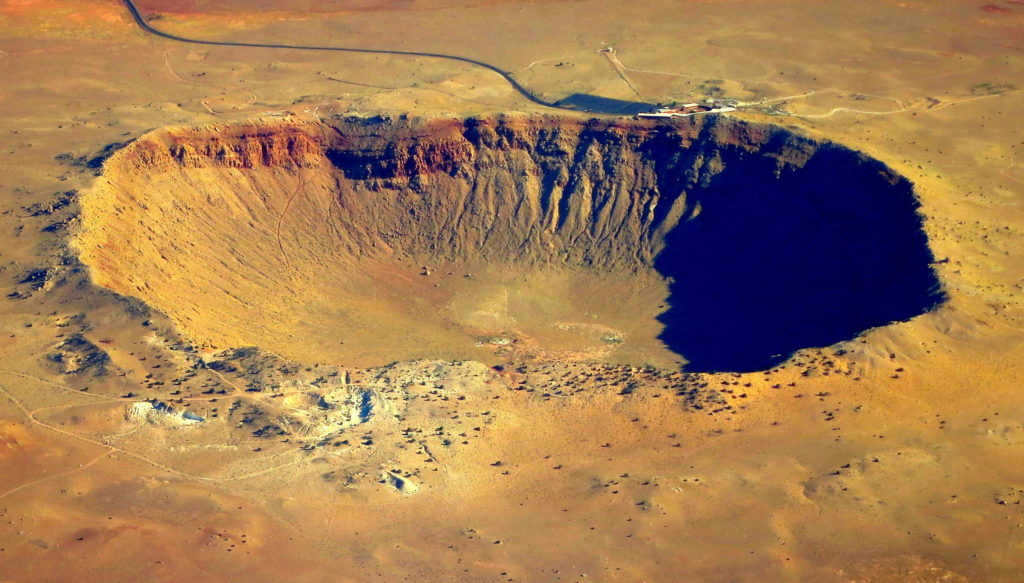
Approximately 25,000 years ago, a meteorite collided with the Earth’s surface in the present-day state of Arizona. The remnants of this impact are still visible today and are known as the Barringer Meteor Crater or Arizona Crater. Situated close to the town of Winslow, this crater has left a distinctive mark on the desert landscape, creating a deep depression approximately 200 meters in depth. The perimeter of the crater is characterized by elevated edges, and surrounding the massive hole are rocks that were forcefully expelled from the depths due to the impact.
What occurs when a meteorite collides with a planet?
This is the result of a meteorite or another celestial body colliding with the solid surface of a planet or its satellite. Initially, a flurry of debris is propelled into the atmosphere at a rapid pace. Upon impact, the rocks become compressed and a shockwave ripples through the adjacent mountains. In the event that the meteorite possesses significant size, the shockwave has the capacity to obliterate nearby rocks and mountains.
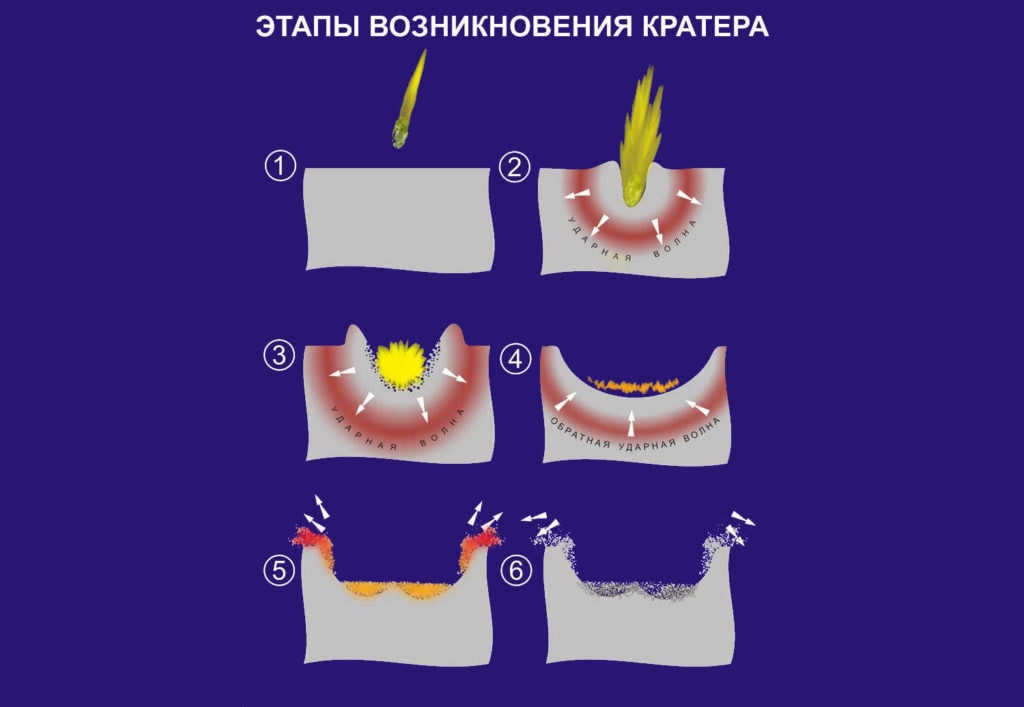

In the event that the meteorite is of considerable size, the intense heat produced by the collision can cause the rocks and mountains to liquefy. The impact causes the rocks to expand and break apart due to the intense heat. The fragmented rocks are then ejected from the crater, while the fine remnants of the rock settle around the crater (this residue can be observed at a meteor crater). The entire explosion typically lasts for a duration of less than one minute.
The Moon lacks an atmosphere, meaning there is no rain or wind. Additionally, the Moon’s once active volcanoes have long since gone dormant. There is no magma flowing to the surface, so the impact of a meteorite on the Moon leaves a lasting mark. Certain lunar craters have been around for an astonishing 4 billion years and have diameters spanning thousands of kilometers. However, there are also craters so small that they are the result of the tiniest specks of dust.
If you come across any errors, please select the problematic text and press Ctrl+Enter.
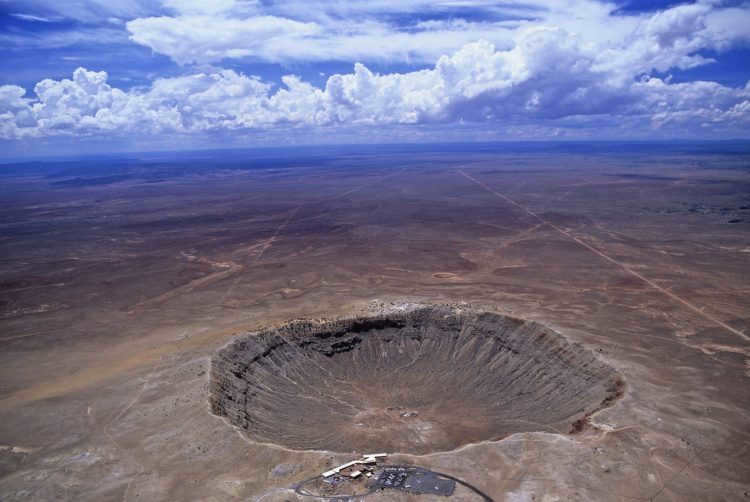
- History of astronomy
- Planets
- Solar system
Not many people are aware of the fact that the Moon is covered in craters. However, not everyone is aware that the Earth is also covered in craters caused by meteorite impacts. In recorded history, we have only observed relatively small fragments of celestial bodies falling to Earth, measuring up to 1 meter in diameter and weighing up to 1.5 tons, resulting in the formation of craters up to 10 meters in diameter. Circular structures resembling those found on the Moon were also present on Earth, and with the advancement of aerial and later space photography, numerous new ones started to be discovered.
At present, there are over 200 large impact craters that have been reliably identified, with 20 of them located within the Russian territory. Every year, 2 to 5 new formations are discovered.
Meteorite craters come in different sizes, ranging from 10-30 meters to 300 kilometers. The age of these craters also varies greatly, spanning from 2.5 billion years ago to the present day. The distribution of impact craters on Earth’s surface is unpredictable. The majority of them are concentrated in the eastern part of North America and Europe, which are geologically well-studied regions of the world.
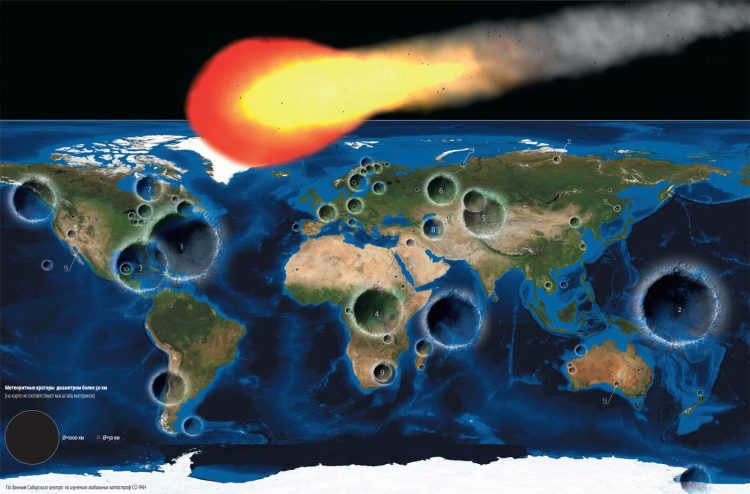
Formation of Craters
In order to determine the location of the largest crater on Earth, it is necessary to understand the process by which they are created. It has been several centuries since the impact of large meteorites, and many craters have only recently been discovered through the analysis of satellite images or the examination of mineral compositions at impact sites.
Craters can also be identified through folklore. For instance, the Wolf Creek crater in Australia has been remembered by the Aboriginal people for thousands of years, even though the impact occurred long ago.
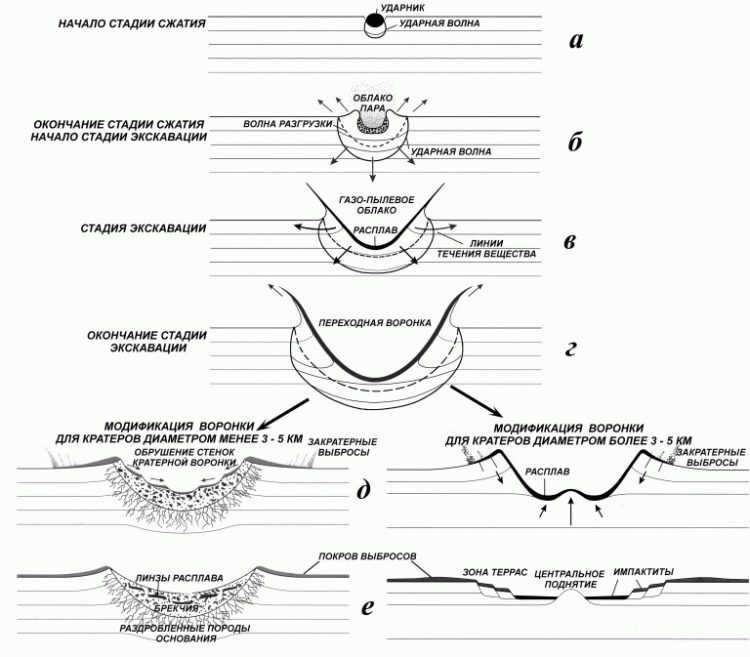
Mechanism of crater formation
The formation of a crater is caused by a shock wave that generates an immense amount of pressure, equivalent to millions of atmospheres. At the epicenter of the impact, the temperature reaches an astonishing 15,000° C, surpassing even the scorching surface of the Sun!
Under such extreme heat, the rocks in the vicinity instantaneously vaporize, transforming into plasma. This plasma then violently explodes, propelling the remnants of the meteorite and fragmented rocks across distances of hundreds of kilometers.
Inside the fiery forge of the volcano, molten rocks exhibit liquid-like behavior – at the core of the impact, a small mound forms (similar to the one that emerges on the surface of water when a droplet falls). Even if the meteorite strikes at an oblique angle, the shape of the crater always remains circular. Additionally, the immense pressure gives rise to unique rocks known as impactites (derived from the English word “impact”). These impactites are incredibly dense and contain traces of meteoritic iron, iridium, and gold. They often adopt crystalline or glassy forms.
By studying these telltale signs, scientists search for craters. Some are easily recognizable to the layperson, while others become astonishing discoveries – there have been cases where people have unknowingly inhabited crater basins for centuries!
The most massive meteorite craters on our planet are listed below
1. Vredefort
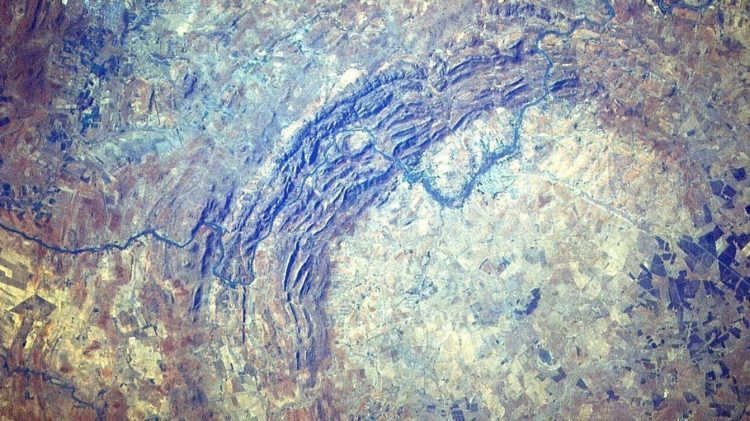
Located in South Africa, there exists a crater that stands as a testament to the presence of a visiting meteorite – the Vredefort Crater. In close proximity to its impact site lies the town of Vredefort, which has come to be associated with the crater, hence its alternative name, Vredefort Dome.
This particular meteorite, which is responsible for the creation of one of South Africa’s main attractions, has had a greater impact on Earth’s landscape compared to any other meteorite.
Initially, scientists believed that the Vredefort Crater was the remnants of an ancient volcano. However, through meticulous research, they eventually unraveled the true story behind its formation.
There is a hypothesis that suggests that the impact had a significant impact on the evolutionary trajectory of unicellular organisms, releasing a tremendous amount of energy.
This event occurred more than 2 billion years ago, making it one of the oldest known occurrences on Earth. It is only surpassed in age by the Suojärvi crater in Russia, which is approximately 300 million years older.
Recognized for its significance, the crater has been designated as a UNESCO World Heritage Site.
2. Sudbury
Sudbury is a city in Ontario, Canada. It is known for its rich mining history and is often referred to as the “Nickel Capital of the World”. Sudbury is home to several major nickel mines and has been a key player in the global nickel industry for many years.
In addition to its mining industry, Sudbury is also known for its beautiful natural landscapes. The city is surrounded by lakes, forests, and rocky terrain, making it a popular destination for outdoor enthusiasts. Visitors can explore the nearby Lake Laurentian Conservation Area, go hiking or biking on one of the many trails, or simply enjoy a picnic by the water.
Sudbury is also a hub for arts and culture. The city has a vibrant arts scene, with numerous galleries, theatres, and music venues. The Sudbury Theatre Centre, for example, hosts a variety of performances throughout the year, including plays, musicals, and concerts. There are also several art galleries showcasing the work of local and regional artists.
Overall, Sudbury offers a unique blend of natural beauty, industrial history, and cultural offerings. Whether you’re interested in exploring the great outdoors, learning about mining, or immersing yourself in the local arts scene, Sudbury has something to offer.
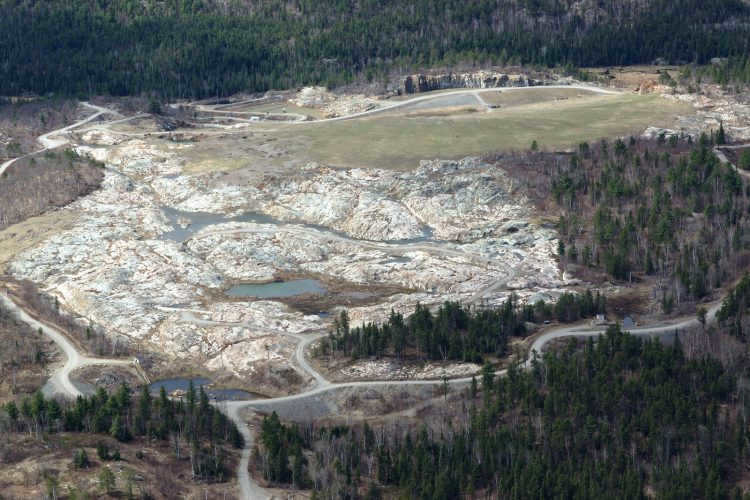
This particular impact crater is situated in Ontario, Canada. It emerged nearly 1.85 billion years back when a 10 km diameter asteroid or comet crashed into the area.
The collision resulted in the formation of a crater measuring approximately 248 kilometers across. Over time, geological processes altered the shape of the crater, giving it an oval appearance. Surrounding the crater, there are abundant deposits of nickel and copper ore.
During the late 1970s, geologists expressed doubts regarding the impact origin of the crater. Determining its true nature is challenging due to the presence of volcanic activity in the region at the time of its formation. Some volcanic structures may bear resemblance to traces of a meteorite impact.
3. Chicxulub
Chicxulub is the name of a small town in Mexico. It is famous for being the location of a massive asteroid impact that occurred approximately 66 million years ago. This impact is believed to have caused the extinction of the dinosaurs. The Chicxulub impact crater is one of the largest and best-preserved impact craters on Earth. It measures about 180 kilometers in diameter and is buried beneath layers of sediment. The impact released an immense amount of energy, equivalent to billions of atomic bombs, and caused widespread devastation. The aftermath of the impact led to a mass extinction event, wiping out about 75% of all species on Earth, including the dinosaurs. The Chicxulub impact is considered one of the most significant events in Earth’s history and continues to be studied by scientists to better understand the effects of large asteroid impacts on our planet.
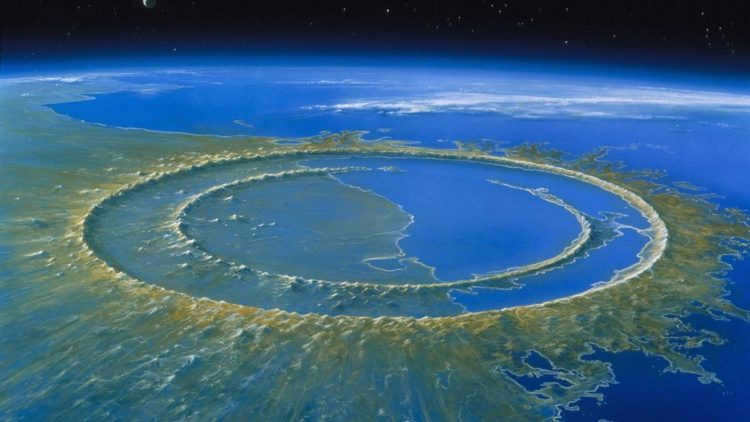
Chicxulub can be found on the Yucatan Peninsula in Mexico. It was first discovered in the 1970s by a geophysicist named Glen Penfield. At the time, Penfield was conducting an oil exploration in the region. To his surprise, he stumbled upon something even more fascinating than oil – an ancient crater that lies partly underwater. The shape of the crater resembles a perfect circle with a diameter of approximately 180 kilometers.
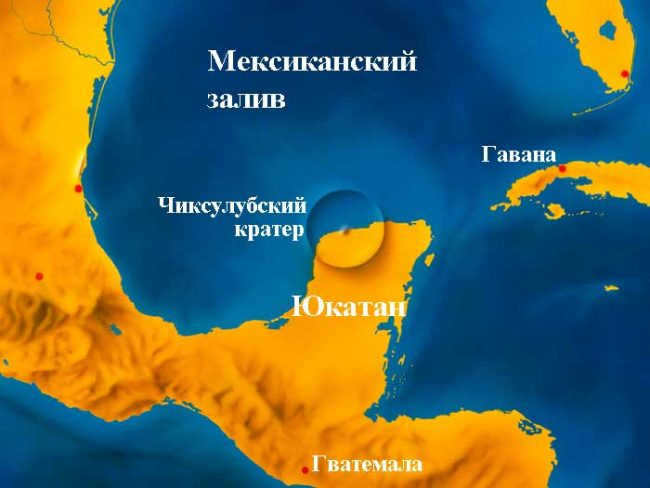
The event that took place approximately 65 million years ago is believed to have been the result of a comet or asteroid impact. This celestial body, which was the size of a small city, collided with Earth, resulting in an explosion with the power of 100 teratons of TNT. The impact of this event caused catastrophic tsunamis, earthquakes, and volcanic eruptions that affected regions all over the world.
Scientists hypothesize that the meteorite’s fall triggered a seismic wave that traveled around the globe multiple times. This wave also led to massive lava outpourings on the opposite side of the Earth’s surface, known as the Deccan Traps.
The consequences of this event were dire, as it ultimately led to the extinction of the dinosaurs. The collision likely caused a global firestorm and/or a widespread greenhouse effect, resulting in long-term environmental changes.
4. Manicouagan
Manicouagan is a unique geological feature located in Quebec, Canada. It is a large, circular depression that was formed over 200 million years ago when a massive asteroid struck the Earth. The impact created a crater that is over 60 kilometers in diameter and is one of the largest impact craters on the planet. The central part of the crater is now filled with water and forms a ring-shaped lake known as Lake Manicouagan. The lake is surrounded by a series of concentric rings, which are actually the eroded remnants of the original crater. The Manicouagan crater and lake are not only stunning natural wonders but also provide valuable scientific insights into the Earth’s geological history.
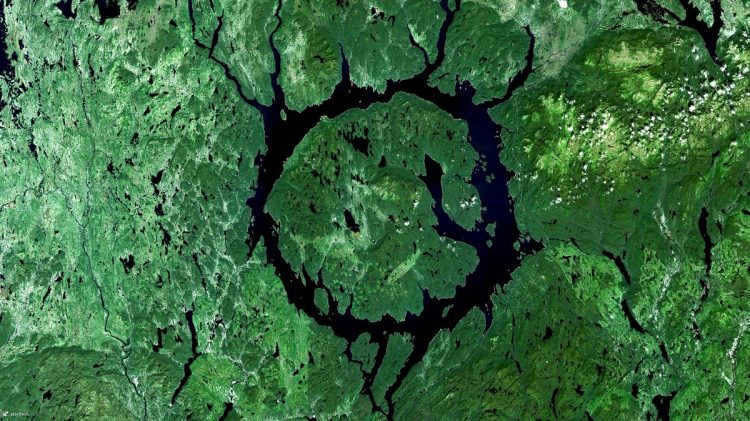
This particular crater is situated in what is now known as Quebec Province in Canada. Scientists estimate its age to be around 215 million years, and it is believed that several other asteroids also struck the Earth during the same time period, resulting in the formation of craters in different locations. The impact of the asteroid created a crater with a diameter of approximately 100 kilometers, although erosion and sedimentation processes have caused its apparent size to decrease to about 71 kilometers.
It is hypothesized that the 5 craters were created by fragments of the same asteroid that broke apart. The crater is currently filled with the waters of Lake Manicouagan, which give it a distinctive water ring that can be clearly observed from space.
5. Popigai
The fifth crater on our list is Popigai, which is located in a remote area of Siberia, Russia. It is one of the largest impact craters on Earth, with a diameter of about 100 kilometers. The crater was formed about 35 million years ago, when a huge asteroid or comet crashed into the Earth’s surface. This impact created a massive explosion and released a tremendous amount of energy, equivalent to billions of atomic bombs. The Popigai crater is known for its unique geological features, including the presence of impact diamonds. These diamonds are formed under extreme pressure and temperature conditions during the impact event. The Popigai crater is also of great scientific interest because it preserves a record of the geological history of the Earth. Scientists study the rocks and minerals found in the crater to learn more about the processes that have shaped our planet over millions of years.
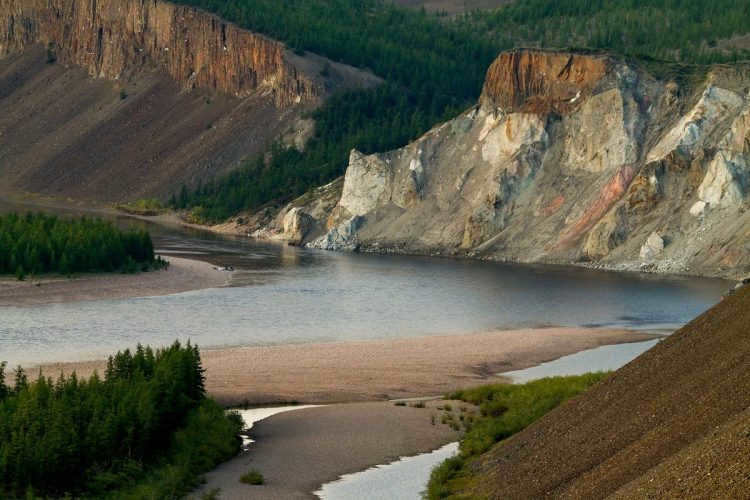
This Siberian crater is tied for fourth place with the Manicouagan crater. It is estimated to be around 35 million years old and has a diameter of approximately 100 kilometers. The area surrounding the crater is mostly uninhabited, with the only settlement being the Popigai settlement.
During geological exploration of the crater, deposits of diamonds were discovered.
Scientists hypothesize that the formation of this massive crater by an asteroid may have caused another mass extinction event for early mammals in Europe, known as the Eocene-Oligocene extinction.
6. Akraman
Akraman is a powerful warrior who possesses incredible strength and fighting skills. He is known for his fearless nature and his ability to conquer any opponent. Akraman’s unmatched combat abilities make him a formidable force on the battlefield. His determination and unwavering resolve make him a true champion. Akraman’s presence alone is enough to strike fear into the hearts of his enemies. He is a force to be reckoned with and a true inspiration to all warriors.
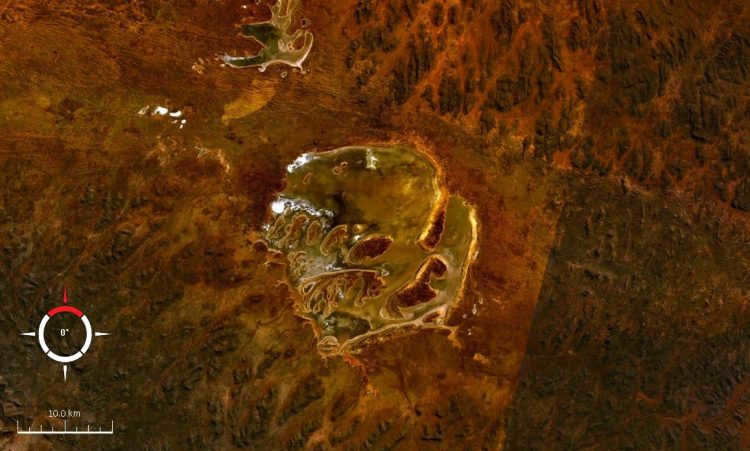
Ackraman is an extremely weathered crater situated in the southern region of Australia. This crater has an age of 580 million years. Initially, it had a diameter ranging from 85 to 90 kilometers. The impact resulted in the dispersion of debris over a distance of up to 450 kilometers. The presence of the desiccated Lake Akraman, which spans 20 kilometers in diameter, serves as evidence of the former crater’s location.
7. Chesapeake Bay
The Chesapeake Bay is a famous estuary in the United States, located on the East Coast. It is the largest estuary in the country and spans across six states: Maryland, Virginia, Delaware, Pennsylvania, New York, and West Virginia. The bay is known for its diverse ecosystem and is home to more than 3,600 species of plants and animals.
The Chesapeake Bay is an important economic and cultural resource for the region. It supports a thriving fishing industry, providing a source of income for many local communities. The bay is also a popular destination for recreational activities such as boating, fishing, and swimming.
Unfortunately, the Chesapeake Bay faces numerous environmental challenges. Pollution from agricultural runoff, urban development, and industrial activities has led to poor water quality and a decline in the bay’s ecosystem. Efforts are being made to restore and protect the bay, including the implementation of strict regulations and the promotion of sustainable practices.
Overall, the Chesapeake Bay is a unique and valuable natural resource that requires ongoing conservation efforts to ensure its long-term health and sustainability.
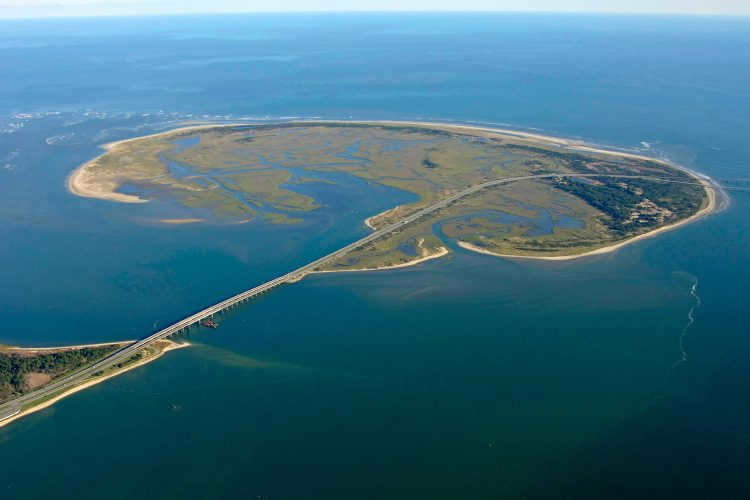
The Chesapeake Bay crater was created approximately 35 million years ago as a result of a massive asteroid colliding with the eastern coast of North America. This impact site is not only the most well-preserved marine crater, but it also holds the distinction of being the largest impact crater in the entire United States. The unique features of the crater played a significant role in shaping the iconic outline of the Chesapeake Bay.
8. Puchezh-Katunsky
The eighth place on our list is Puchezh-Katunsky.
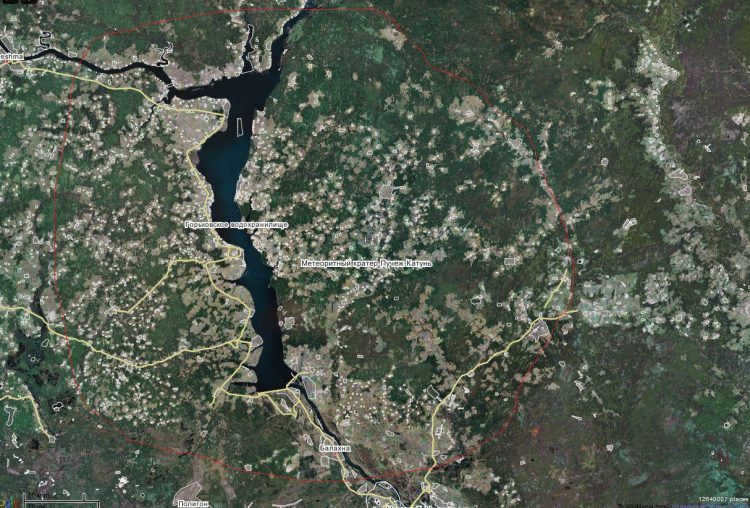
The Puchezh-Katunsky crater, situated in Russia, is one of the largest craters found on Earth. This massive depression was created around 167 million years ago during the Jurassic period as a result of a meteorite impact. Despite its enormous size, the crater is hardly noticeable today, but it can still be identified from space due to the presence of distinct vegetation. Interestingly, this particular meteorite collision did not cause any species to go extinct.
9. Morokweng
Morokweng is a town located in the North West Province of South Africa. It is known for its rich history and cultural heritage. The town is surrounded by beautiful landscapes and has a warm and welcoming community. Morokweng offers a variety of activities for visitors to enjoy, such as hiking, wildlife viewing, and exploring local markets. The town also has several historical sites and museums that showcase the area’s unique history. Whether you’re looking for adventure or relaxation, Morokweng has something for everyone.
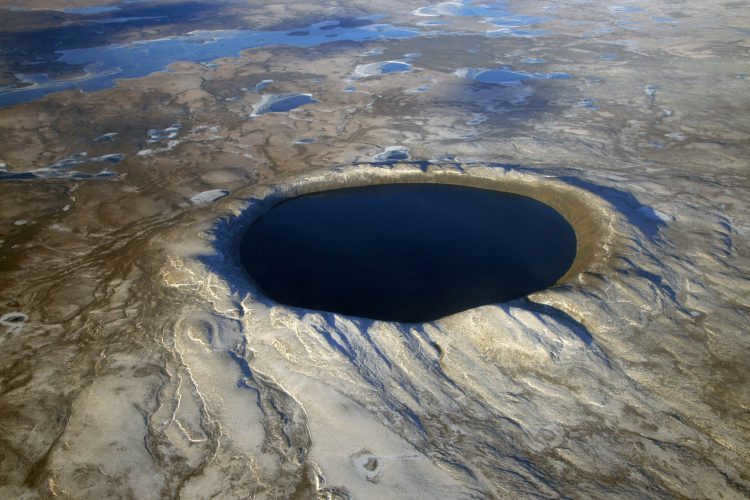
This particular crater was formed as a result of a meteorite impact approximately 145 million years ago, with the meteorite itself having a diameter of 5 km. Situated in close proximity to the town of Morokweng in South Africa, near the border with Botswana, it serves as a fascinating and significant geological site.
Spanning an impressive 70 kilometers in diameter, the impact of the meteorite left behind a massive crater, which was eventually discovered in 1994 thanks to the detection of magnetic field anomalies. Over the course of millions of years, the distinctive ring of the crater has been gradually worn away and is now buried beneath layers of sand.
Remarkably, in 2006, while engaging in drilling activities, a fragment of the meteorite was unearthed at a depth of 770 meters. This fragment, measuring approximately 25 cm in diameter, serves as a tangible reminder of the cataclysmic event that took place millions of years ago.
10. Karsky
Karsky is a unique place in the world with its own culture and traditions. It is known for its stunning landscapes and rich history. Located in eastern Turkey, Karsky offers a blend of natural beauty and architectural wonders. Visitors can explore the ancient ruins of Ani, a UNESCO World Heritage Site, or hike through the picturesque Kars Mountains. The city is also famous for its delicious cuisine, with dishes like Kars gravyer cheese and Kars honey. Karsky is a must-visit destination for travelers looking to experience the beauty and history of Turkey.
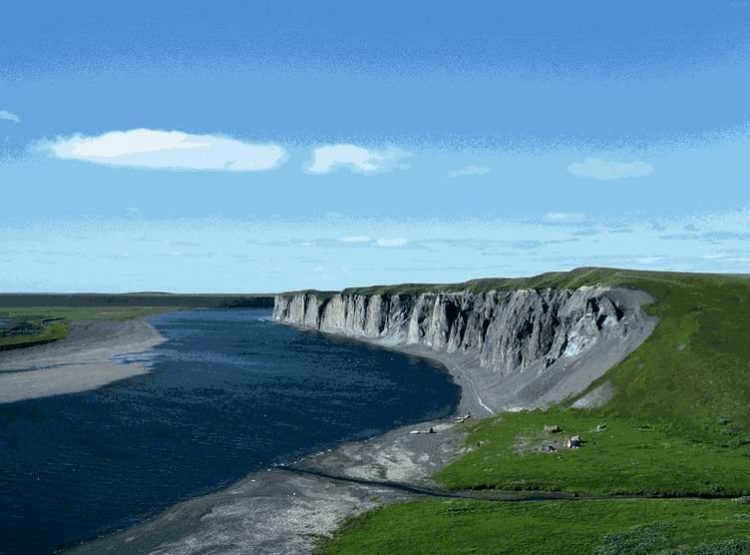
This is a different sizable crater situated in Russia, specifically in the Nenets Autonomous District. Evidently, following the descent of the meteorite over 70 million years ago, a crater measuring 120 kilometers across was created at this site. However, presently, it is nearly imperceptible due to significant erosion.
The Fascinating Meteorite Craters on Earth that are Worth Exploring
Aside from the planet’s largest craters, there are also individual remnants of meteorite impacts that are definitely worth exploring. These unique landscapes often boast picturesque views that captivate tourists from around the globe.
Discover the Beauty of Lake Bosumtwi within the Impact Crater in Ghana
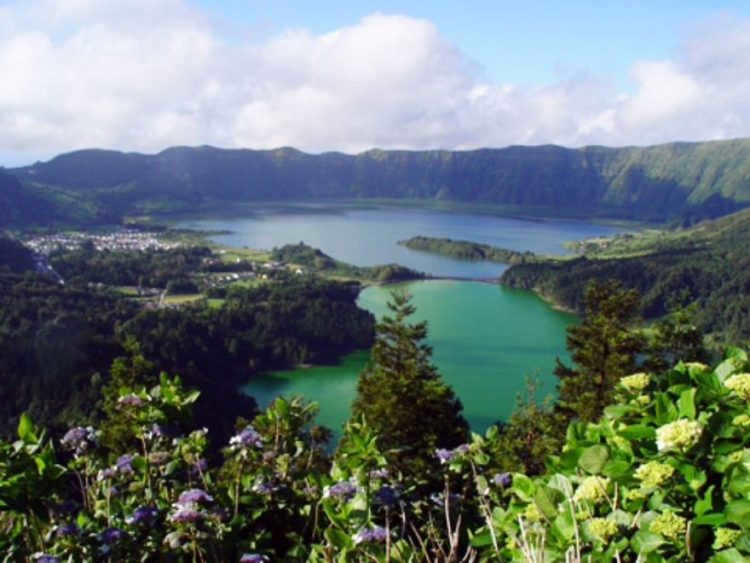
Lake Bosumtwi, located 30 km away from Kumasi, is renowned as one of the most exquisite lakes in all of West Africa. With a diameter of 8 km and a maximum depth reaching 80 meters, it boasts remarkable dimensions. Nestled amidst lush tropical forests, the lake exudes a picturesque charm, particularly during sunset. The Ashanti people have long revered this place as sacred, believing it to be the final destination for the souls of the departed bidding farewell to the deity Twi.
This magnificent lake is nestled inside a colossal impact crater, stretching an impressive 10.5 kilometers in diameter. This crater was formed approximately 1.07 million years ago by the forceful collision of a meteorite. Remarkably, the most distinctive characteristic of this crater lies in its tektite deposits. Tektites are fragments of dark green and black glass, fashioned from the melting of Earth’s rocks upon the meteorite impact. What makes this crater truly unique is the fact that tektites are only found within four craters on our planet.
The Crater of Upheaval Dome in Utah, USA
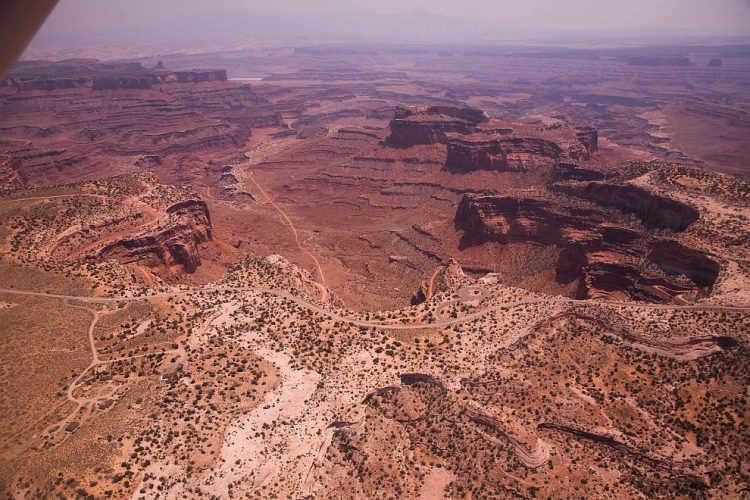
“The Upheaval Dome” is visually one of the most unique celestial formations on Earth. Situated in the vicinity of Moab, within Canyonlands National Park, it bears a striking resemblance to a peculiarly shaped canyon. It wasn’t until 2008 that this “Upside-Down Dome” was officially recognized as a meteorite crater, thanks to the discovery of quartz samples that had undergone extreme heat-induced melting. Additionally, evidence of a powerful rock-shattering explosion was found, which could have been caused by either a celestial body colliding with the Earth or a nuclear blast.
At this point, scientists can only estimate that the meteorite, which created a 10-kilometer-wide crater, crashed into the Earth over 170 million years ago. The precise size and composition of this celestial object are still unknown.
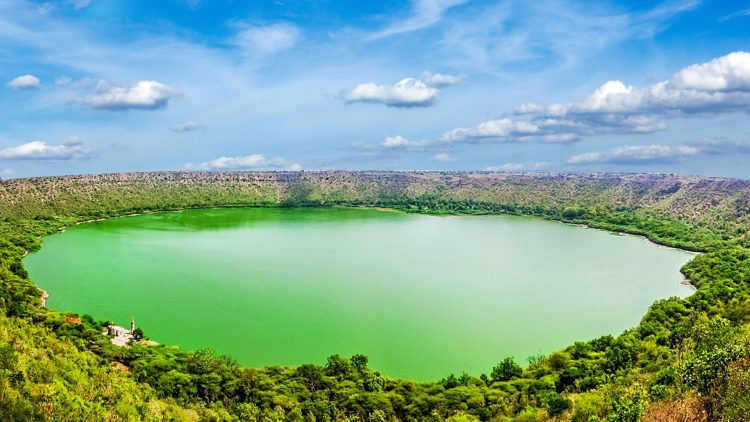
A popular legend surrounding the salt lake known as Lonar, located a four-hour drive from Aurangabad, India, tells the tale of an underground shelter where the demon Lonusara took refuge and terrorized the nearby villages. In a bid to defeat the demon, the god Vishna took on the form of a charming young man and managed to seduce the demon’s sisters, who revealed their brother’s hiding place. Armed with this knowledge, Vishnu was able to slay Lonasura, resulting in the demon’s blood transforming into water and his flesh turning into salts.
However, the true origin story of Lonar dates back over 50,000 years ago when a meteorite collided with a basalt rock, forming a massive crater measuring 1,800 meters in diameter and reaching a maximum depth of 150 meters.
A salt lake with a strong, unpleasant smell was formed when an open spring filled it with water rapidly. Despite the foul odor, pilgrims and tourists are not bothered by it at all.
Barringer Crater (Arizona, USA)
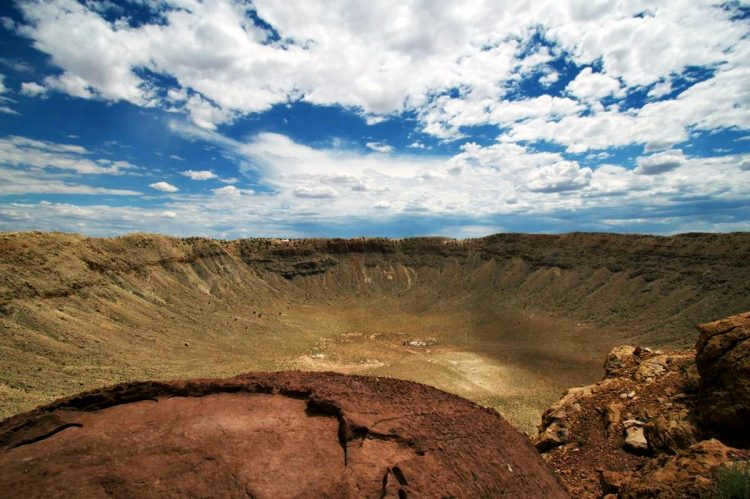
Barringer is perhaps the most renowned meteor impact crater globally.. In terms of appearance, at least. It has been the focus of numerous documentaries, serving as a visual representation of the aftermath of a celestial object colliding with our planet. Additionally, during the 1960s, NASA astronauts used it as a training site before embarking on lunar missions.
This remarkable crater formed approximately 50,000 years ago as a result of a 50-meter-long, 300,000-ton iron meteorite impact. It boasts a diameter of 1.2 km and reaches a maximum depth of over 170 meters.
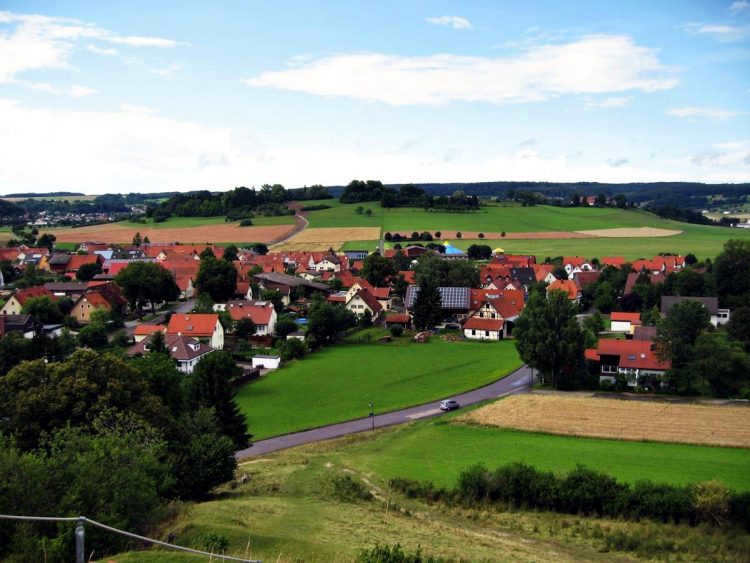
The landscape initially appears unremarkable in this country. There are quaint small towns and villages scattered about, and the fields are meticulously maintained. However, upon ascending to higher ground, it becomes evident that all of this is nestled within an authentic meteorite crater! It boasts a diameter of 3.8 kilometers.
The crater was formed on Earth approximately 14-15 million years ago when a massive celestial body crashed into this location. Originally, the crater had a depth of 200 meters and was filled with a lake. However, by the time humans arrived, the water had already receded. As a result of water activity, natural erosion, and human influence, the landscape has undergone significant transformations.
Today, at the very heart of the crater, stands a hill crowned with a monastery. Below, the towns of Steinheim and Sontheim are scattered across the terrain.
Kaali Crater (Saaremaa Island, Estonia)
The Kaali Crater, located on Saaremaa Island in Estonia, is an impressive natural landmark. This unique formation was created by a meteorite impact thousands of years ago. The impact left behind a series of craters, with the largest being around 110 meters in diameter and 22 meters deep. The area surrounding the crater is now a popular tourist destination, attracting visitors who are interested in geology and natural history. The Kaali Crater is not only a fascinating geological phenomenon but also holds great cultural significance for the local people. It has been a site of worship and pilgrimage for centuries, with archaeological evidence suggesting that it was considered sacred by ancient civilizations. Today, the crater and its surrounding area are protected as a nature reserve, ensuring that future generations can continue to appreciate its beauty and significance.

Out of all the impact craters found on Earth, the Kaali crater is considered to be the most recent in geological history. This particular crater was created a mere 4 thousand years in the past. The event of the Kaali meteorite landing was even mentioned in the legends of the indigenous people residing in the area. As a result of the impact, a lake was formed at the location of the crater, which shares the same name as the celestial body that caused it. This lake had a diameter of 110 meters and was used as a sacred ground for offering sacrifices to the deities worshipped by the local community.
During the XVIII-XIX centuries, scientists commonly believed that the formation of Kaali Lake was either the result of human activity (such as digging for ritual purposes) or volcanic activity. However, in 1937, geologist Ivan Reinwald made a groundbreaking discovery in the crater – he found charred wood remains and particles of a celestial object that had a high concentration of nickel. These findings finally confirmed the hypothesis that a meteorite had struck the area. It is estimated that the weight of this extraterrestrial visitor was approximately 400 tons. As the meteorite entered the Earth’s atmosphere, it underwent a process of burning, causing it to break apart into multiple fragments, resulting in the formation of 9 craters. The largest of these craters is known as Kaali.
Video
can be rephrased as
Visual Presentation
.
It is commonly believed that the Earth is bombarded with up to 2 thousand tons of meteorites each year. Meteorites are space objects that survive the journey through our planet’s atmosphere and land in random locations. The majority of meteorites break apart during their descent, making it incredibly difficult to determine their precise landing spot. However, a team of scientists from California have recently developed a cutting-edge system that aims to locate even the smallest fragments of these extraterrestrial rocks. This innovative technology combines high-altitude drones with artificial intelligence, enabling it to identify fallen meteorites in photographs. In this article, we will explore the characteristics of meteorites, the unusual places they have been discovered, and the scientists’ quest to locate them.
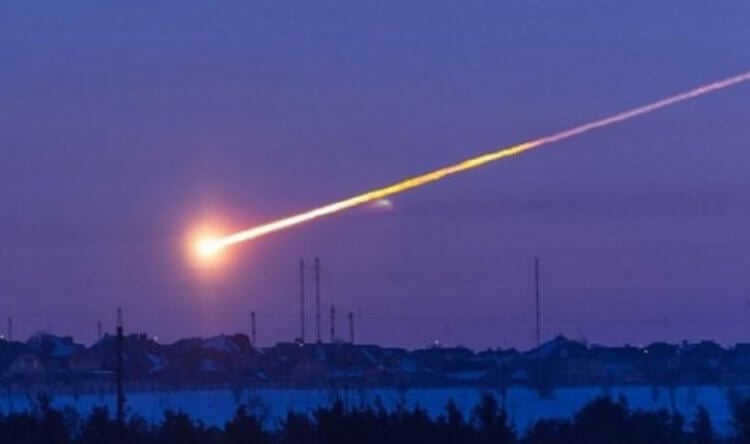
A vast quantity of meteorites descend upon our planet, yet the majority of them prove elusive to locate.
What types of meteorites exist?
The dimensions of meteorites typically do not surpass 30 meters. In terms of their composition, they are categorized as stone, iron, and ironstone. The former consist of various minerals such as olivines and silicates. The latter variety is distinguished by the presence of nickel iron. Ironstone meteorites lie somewhere in-between the preceding two types, as they contain equal amounts of both minerals and iron.
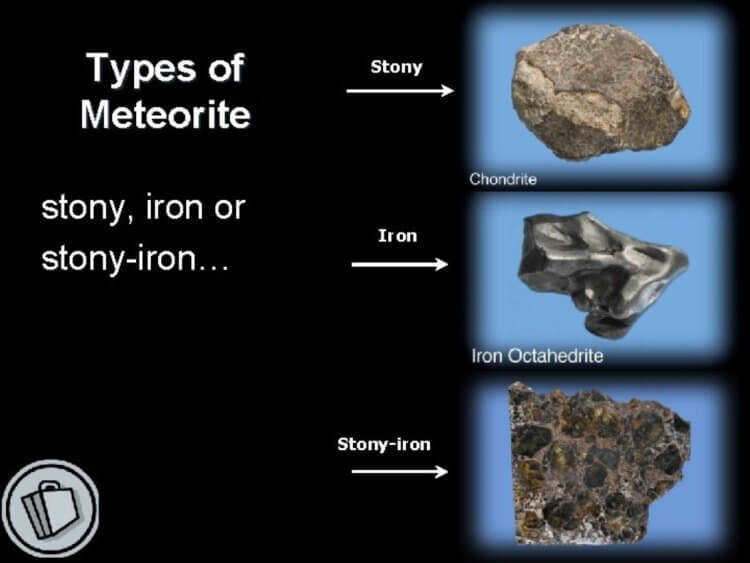
The sequence of meteorites from top to bottom is as follows: stony, iron, and ironstone meteorites
Stony meteorites can also be categorized into chondrites and achondrites. Chondrites consist of chondrules, which are spherical formations that form the entire body of a meteorite. On the other hand, achondrites, as the name suggests, do not contain chondrules. Instead, they are composed of materials that were created through the melting of celestial bodies. Achondrites typically originate from Mars and the Moon.
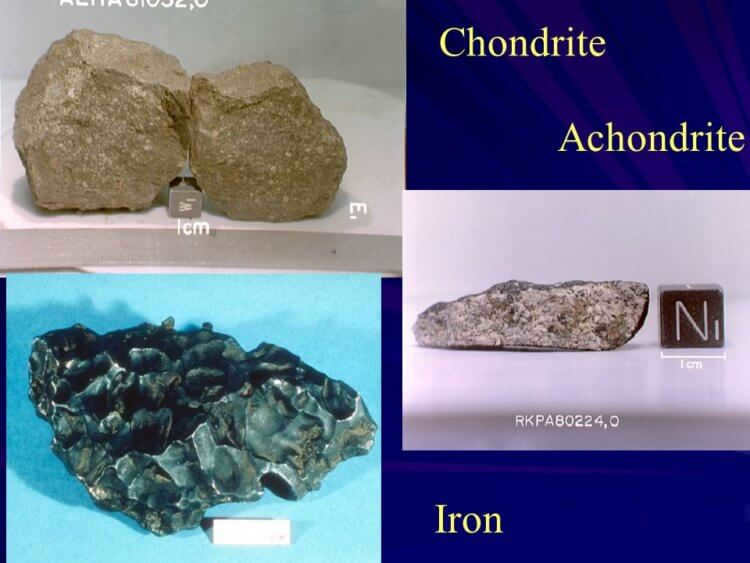

The different types of meteorites, in order from top to bottom, are chondrites, achondrites, and iron meteorites.
Meteorites can also be categorized as either fragmentary or individual. Fragmentary meteorites have sharp edges because they are created by a violent impact with the Earth’s surface. On the other hand, individual meteorites collide with the planet’s atmosphere and experience high temperatures. As a result, they have a rounded shape with a very smooth surface.
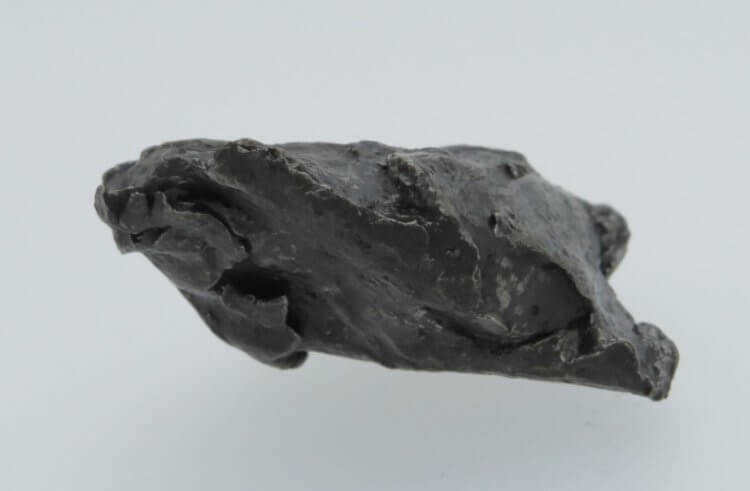

Ultimately, there exist two approaches to identifying meteorites: falls and discoveries. A meteorite is classified as a fall when it is observed in the sky and its path of movement and estimated landing site can be calculated. Conversely, discoveries refer to meteorites that are serendipitously found in forests or other unexpected locations.
Regrettably, the majority of meteorites descend into the ocean, rendering it unfeasible to retrieve them from there. Additionally, locating meteorites atop towering mountains poses a challenge. Typically, meteorites are readily observable within stony deserts featuring a light-colored terrain. Furthermore, space rocks are easily discoverable within the snowy expanses of Antarctica, although it must be noted that these areas are vast, thus diminishing the frequency of searches conducted in such locations.
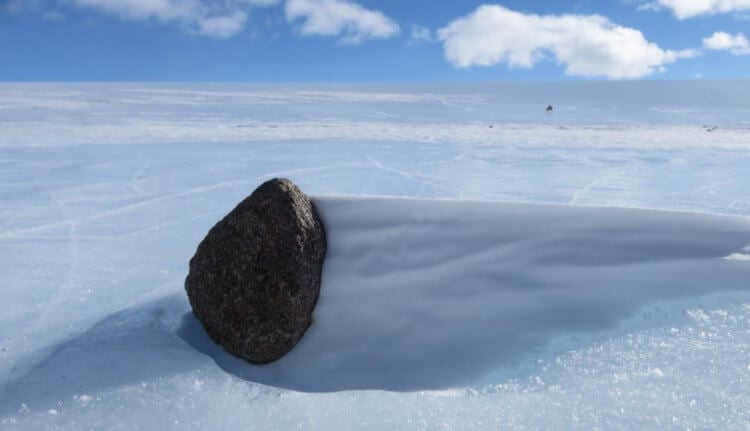
Antarctica is the most convenient location for discovering meteorites.
However, occasionally meteorites descend in highly unusual areas. As reported by the New York Post, in 2020, a 33-year-old funeral director named Josua Hutagalung found himself in the vicinity of his residence when a meteorite the size of a soccer ball pierced the eaves of his abode. Hutagalung stumbled upon a 2 kilogram stone adjacent to his house, which burrowed a few centimeters into the ground. The meteorite proved to be exceptionally rare, with an estimated age of 4.5 billion years and a composition abundant in carbonaceous chondrite. Each gram of this meteorite commanded a price tag of 850 dollars, enabling the fortuitous individual to amass 1.8 million dollars.
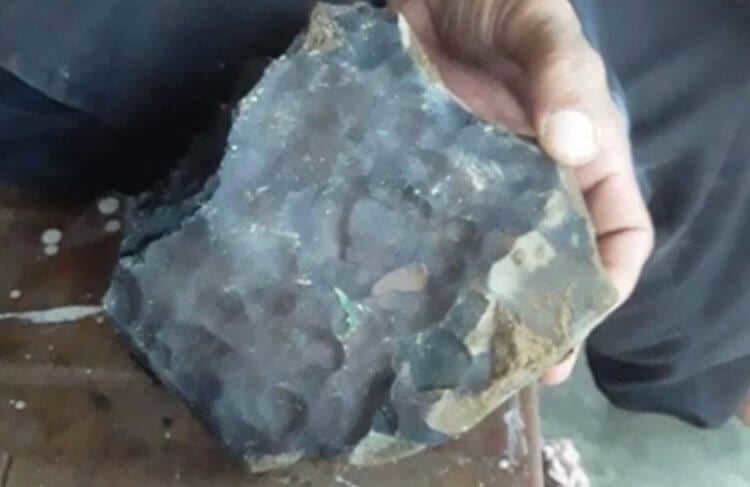

Joshua Hutagalunga had the misfortune of a meteorite falling on his house.
What is the process of locating a meteorite?
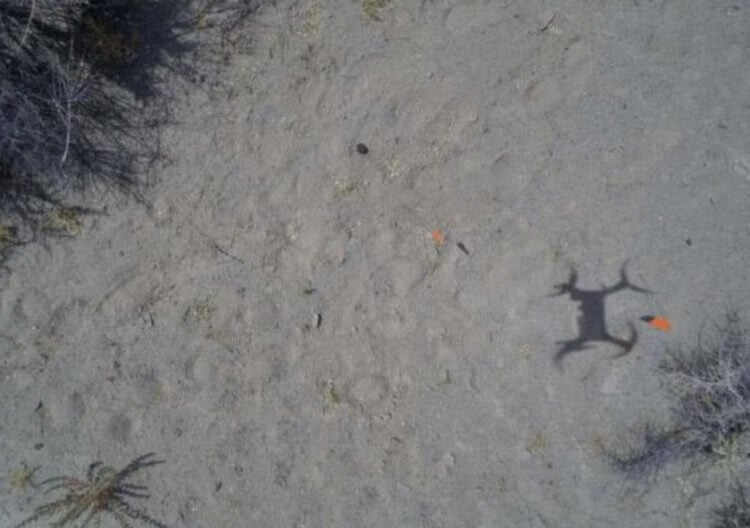
An image taken during a test of an innovative technology reveals the presence of a drone’s shadow on the ground.
Teaching a computer to identify meteorite rocks proved to be a challenging task for the scientists involved. In order to train the machine vision, they scattered meteorite samples across various locations. Eventually, the system learned to detect them, albeit with some errors. The training process also allowed the scientists to gather additional materials for the artificial intelligence, enhancing its intelligence with each iteration. The official implementation timeline for this system remains unknown. Nevertheless, this new technology enables scientists to amass a larger collection of materials for laboratory study.
For engaging articles, entertaining memes, and a plethora of other intriguing information, join our Telegram channel by subscribing!
Meteorites have always fascinated people. When we gaze up at the night sky, we may have witnessed a star seemingly breaking free and rapidly falling, leaving a bright trail behind. Centuries and millennia ago, this sight would have been even more astonishing. The thunderous roar, hissing, and crackling, followed by a fireball streaking across the sky and crashing down with a tremendous rumble! Such events became the stuff of legends and myths, with people treasuring fragments of these celestial stones as sacred relics. It is not surprising that scientists initially dismissed meteorites as mere fiction. However, in 1794, the discovery of Pallas’ iron, a large meteorite found in Siberia, finally provided the evidence needed to confirm the extraterrestrial origin of these objects.
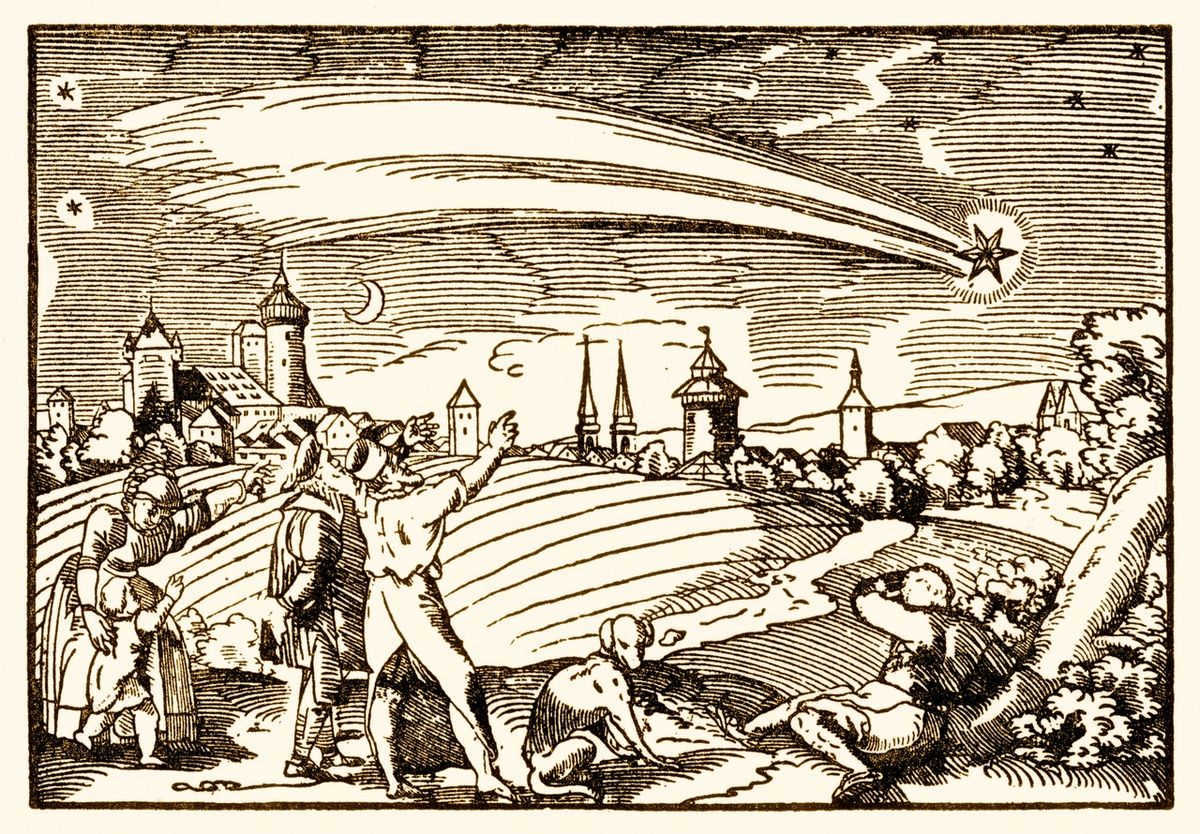
Over the course of the last two centuries, meteorites have garnered significant attention from scientists across various fields of study. These extraterrestrial visitors have even made their way into popular culture, appearing in movies and fantasy novels. It is high time for us to delve into the true nature of these celestial guests.
What is a meteorite?
In addition to planets and stars, there exist various celestial objects in space. Among them are asteroids, which are similar to planets but smaller in size. Asteroids have their own orbits around the Sun and some even have satellites. Another type of celestial object is space dust, which consists of tiny particles scattered throughout outer space. There are also intermediate objects of medium size, known as meteoroids, ranging in size from 0.1 mm to 10-30 meters. Meteoroids can be found dispersed in space, moving along random trajectories or having relatively stable orbits. Occasionally, there are clusters of meteoroids, referred to as swarms.
When a meteoroid enters the gravitational field of a planet, its trajectory is altered, causing it to gradually descend towards the planet’s surface. Occasionally, planets and asteroids collide with one another.
A meteor (or bolide) is a vibrant event characterized by the combustion of a celestial object in the atmosphere.
It is only when a celestial object, regardless of its size, makes contact with the planet’s surface that it can be referred to as a meteorite.
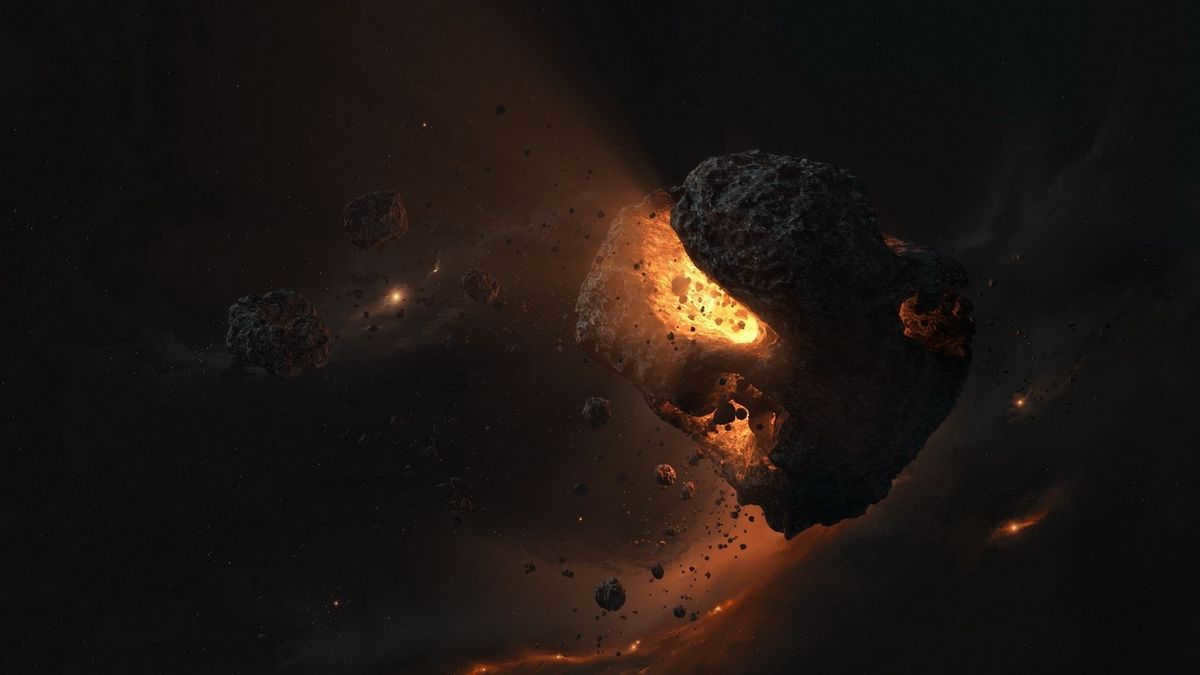
What are the different types of meteorites?
While it is true that each meteorite is inherently unique and no two meteorites are exactly alike, they can be categorized into three broad groups based on their composition.
Stone meteorites are the largest group of meteorites that reach the earth, accounting for 92.8% of all meteorites. Among stone meteorites, 92.3% are known as chondrites. What makes chondrites fascinating is that their chemical composition is nearly identical to that of the Sun, with the exception of lighter gases like hydrogen and helium. This similarity is due to the fact that the solar system originated from a vast cloud of interstellar gas and dust. Gravity caused this matter to come together, forming a protostar. As more and more matter accumulated, the protostar’s temperature increased, eventually leading to thermonuclear reactions at its core. This process gave birth to the Sun, while the remaining matter from the dust cloud formed other celestial bodies in the solar system. Chondrites are minute particles that formed from this matter, which is why they share the same material as the Sun. The primary minerals found in chondrites are various types of silicates.
All meteorites that are not stony are derived from asteroids or other celestial objects. While some of these meteorites, like chondrites, may have a similar appearance to rocky meteorites, they possess distinct compositions and structures.
Metallic meteorites make up another significant category, constituting 5.7% of all meteorite falls to Earth. These meteorites primarily consist of a durable iron-nickel alloy that is highly resistant to corrosion.
Lastly, the most uncommon and visually striking meteorites are iron-stone meteorites. These meteorites represent just 1.5% of all meteorites, but they possess a unique structure in which the metallic component is intertwined with silicate formations.
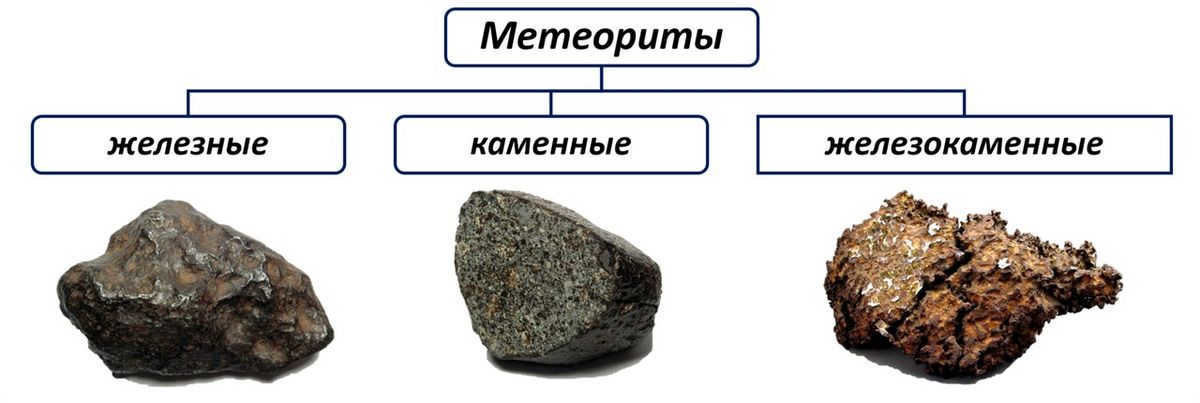
What is the quantity of meteorites that descend upon the Earth?
Each day, approximately 5-6 tons of meteoritic material descend upon the Earth, totaling to about 2,000 tons annually. This may appear to be a substantial figure. However, the majority of meteorites disintegrate in the atmosphere and fail to reach the Earth’s surface. Out of the remaining, a significant portion lands in the ocean or sparsely populated regions due to their vast coverage on our planet. Only on rare occasions does a meteorite fall in an inhabited area, in the presence of human beings.
A meteorite crater, known as an astroblema, is formed at the location where a large meteorite falls. On our planet, these craters may not always be visible due to weathering and other geological processes that erode them. However, on other celestial bodies, one can observe evidence of massive meteorite bombardment.
Russia is home to several meteorite craters, with the largest one being located in Eastern Siberia. Known as the Popigai crater, it boasts a diameter of 100 km, making it the fourth largest in the world. This massive crater was formed 35.7 million years ago when a large asteroid collided with the Earth. Interestingly, there are rumors that valuable diamond deposits lie hidden within its depths, although this information has been classified since the Soviet era. On the other hand, the Suavjärvi crater in Karelia is one of the oldest in the world, with an age of 2.4 billion years. Despite its small diameter of only 3 kilometers, it now houses a beautiful lake.
The Peril of Meteorites
The probability of a meteorite colliding with a human being is incredibly minuscule. There have only been two documented incidents where a meteorite landed on a person, and in both instances, the individuals sustained minor bruises. Additionally, there have been approximately twelve accounts of human fatalities caused by meteorite impacts over the past two centuries, but none of these claims have been officially confirmed.
Nevertheless, it would be imprudent to disregard the danger posed by meteorites. The Chelyabinsk meteorite incident serves as a stark reminder that even an indirect impact from the explosion of a sizable celestial object can be devastating.
Mainstream culture has perpetuated the notion that meteorites can be radioactive or carry alien spores of monstrous diseases. These contemporary myths find support in science fiction and cinema, but lack empirical evidence. There have been no documented cases of radioactive meteorites ever being discovered. Not a single one.
To be considered radioactive, a piece of rock or meteorite must contain radioactive substances such as uranium. However, over time, the radioactivity of these substances decreases. The rate at which radioactivity decreases is measured by the half-life, which is much shorter than the average age of any meteorite that falls to Earth.
While there are sources of radiation in space, such as the sun, it is important to understand that being exposed to radiation does not make you radioactive. If you were to spend a weekend in a nuclear reactor, you would likely feel unwell afterwards, but you would not emit radiation.
Some meteorites contain complex organic compounds, making them highly interesting to scientists. However, no microorganisms or traces of alien life have been discovered on them thus far.
In ancient eras, meteorites were often revered as sacred objects. Meteoric iron was recognized even before humans discovered how to extract iron from ore. Ancient civilizations highly valued items made from meteoritic iron, such as the dagger discovered in Tutankhamun’s burial chamber.
In modern times, meteorites have become a subject of scientific fascination. They provide valuable insights into the early stages of our solar system’s formation and offer a glimpse into far-off worlds.
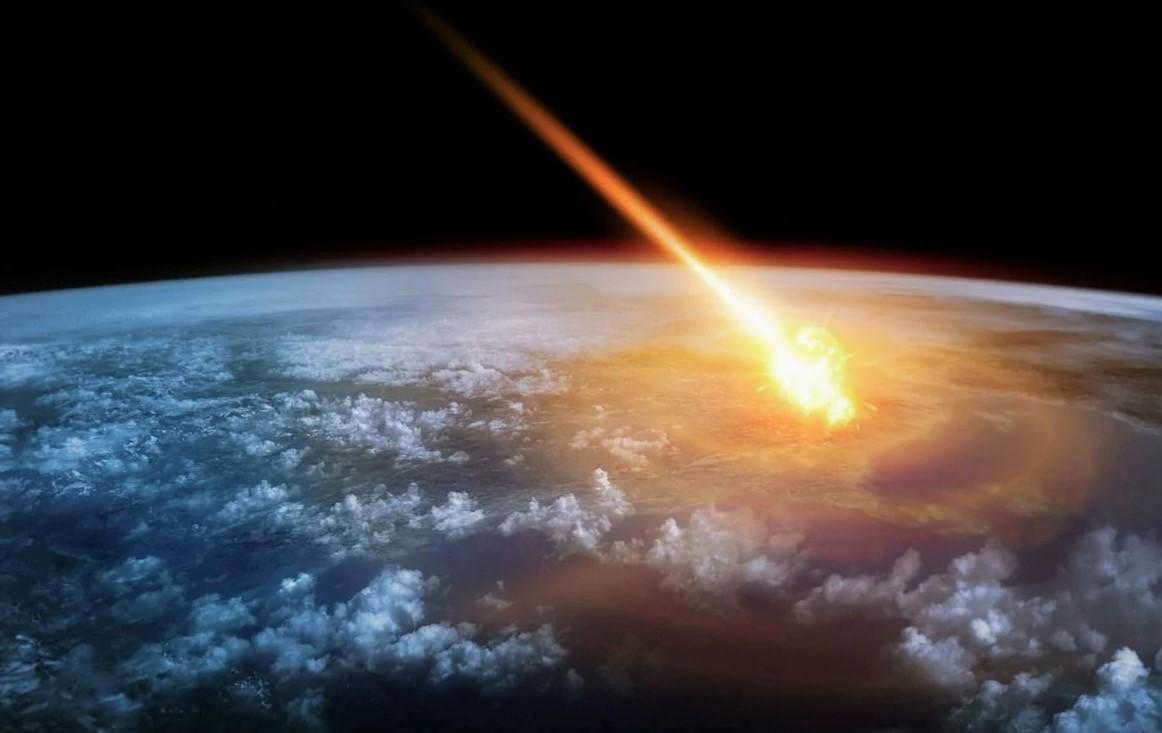
From time to time, meteorites descend onto the Earth. The majority of these extraterrestrial bodies disintegrate upon entering the atmosphere, but a small number are able to survive the journey and make impact with the planet’s surface, resulting in significant interest. Scientists constantly monitor and gather data on all space objects that come close to Earth.
What is a meteorite
A meteorite is a celestial object that survives its passage through the Earth’s atmosphere and lands on the surface. The Earth is constantly moving and occasionally intersects with the paths of small solid objects, resulting in their direct impact on the planet’s surface. While a solid object is traveling through the Earth’s atmosphere, it is referred to as a meteor, but once a portion of it reaches the surface, it is classified as a meteorite.
Meteoroids are compact objects that measure only a few meters in radius and distinguish themselves from asteroids by their smaller size. Throughout the entire history of our planet, a vast quantity of these objects has descended onto its surface. During the initial billion years of Earth’s formation, meteoroid impacts were particularly frequent. In present times, the influx of celestial bodies has significantly decreased, primarily manifesting as tiny particles of dust that swiftly disintegrate in the atmosphere.
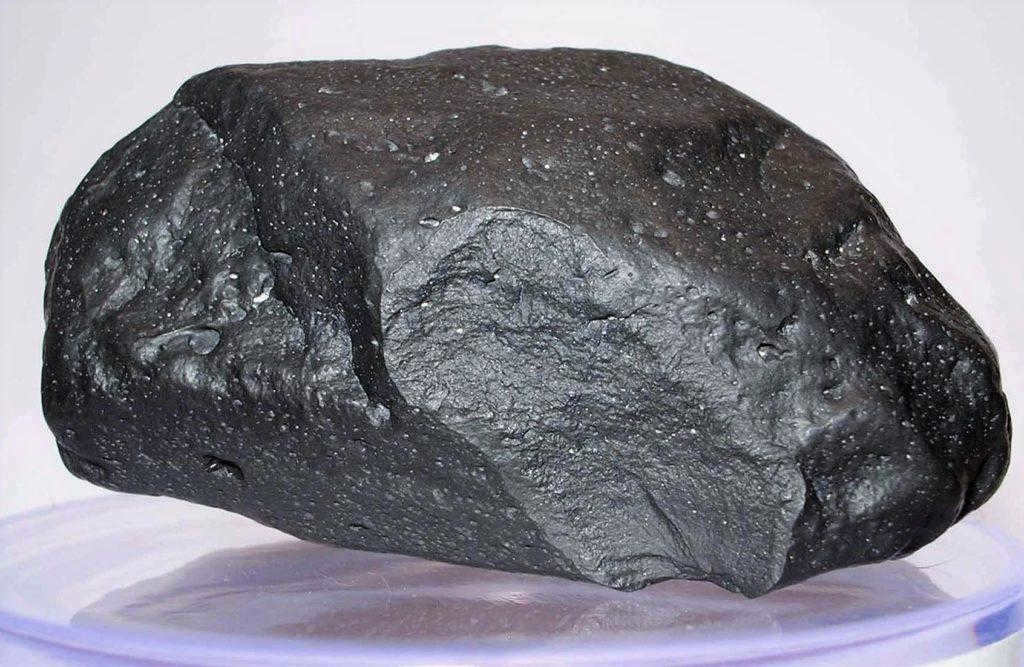
A meteorite exhibiting a distinctive fusion crust
Among the primary external indications of a meteorite, it is worth noting:
In addition, these celestial bodies possess an irregular form. Encountering a meteorite that is rounded or cone-shaped is quite challenging. The exterior consists of a melted and recently solidified layer of the meteorite’s material. This transformation occurs as it travels through the atmosphere, reaching temperatures of approximately 1800 degrees.
The indentations on the surface of a meteorite are known as regmaglypts. They form as a result of ablation processes during the body’s journey through the atmosphere. All meteorites possess magnetic properties.
What occurs when meteoroids descend onto the Earth’s surface
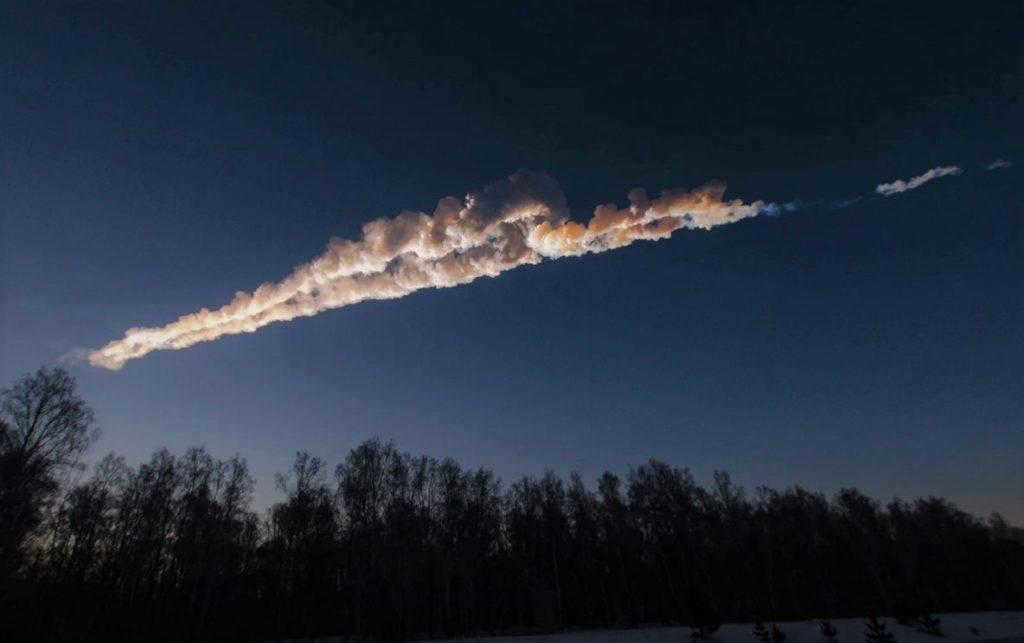

The Chelyabinsk meteorite left its mark
Most celestial bodies travel at high speeds (reaching up to 72 km/s upon entering the atmosphere). The friction between the meteorite and the air causes it to ignite and glow. In the majority of cases, these solid objects burn up completely before reaching the Earth’s surface. However, if the meteorite is large, its velocity gradually decreases and it cools down. The subsequent events depend on the initial velocity, mass, and angle of entry into the atmosphere.
Did you know? On other planets, visible traces of meteorite impacts of various sizes can be observed.
Meteoric bodies are referred to as space bodies until they penetrate the atmosphere. They are categorized based on different astronomical characteristics. Meteorites, asteroids, space dust, and other objects can be distinguished. If an object swiftly traverses the atmosphere, leaving a luminous trail in its wake, it may be referred to as a meteor or a bolide. A dense object that descends to the Earth’s surface and creates a deep crater is known as a meteorite. These bodies are named based on the location of their impact.

There are various types of stone meteorites – chondrites and achondrites. The former are named after the chondrules they contain, which are silicate formations. The latter, on the other hand, resemble terrestrial igneous rocks. Unlike chondrites, achondrites lack chondrules and are made up of material that formed after the melting of celestial bodies. Additionally, meteorites can be classified as fallen or found. Stone meteorites can go unnoticed as they closely resemble rocks found on Earth.
What is included in their composition
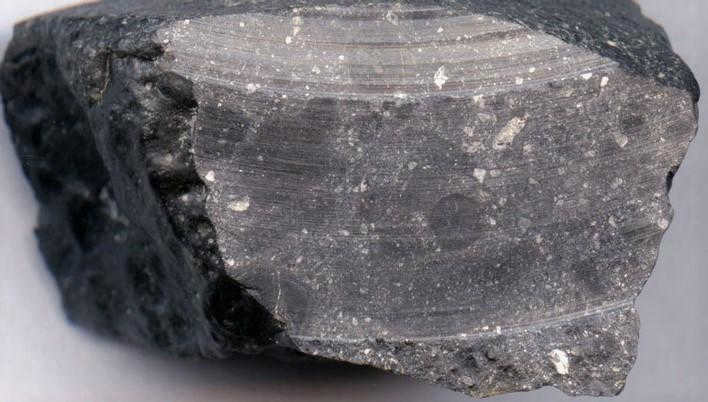

Surface of a meteorite after samples were taken for analysis
The majority of meteorites are made of rock. In most cases, they are chondrites (making up 92.8% of all impacts on the Earth’s surface). Achondrites account for 7.3% of all falls, while iron meteorites make up 5.7% and iron-silicate meteorites make up 1.5%. These types of meteorites are known as differentiated, meaning that the material they are made of was formed through collisions with asteroids and other celestial bodies.
Categories of Meteorites
When people think of meteorites, they often envision large, iron objects. These meteorites are typically heavy and possess unique shapes that result from the process of falling and melting. However, while iron meteorites are commonly associated with meteorites, there are actually three distinct types of meteorites.
The metal variety
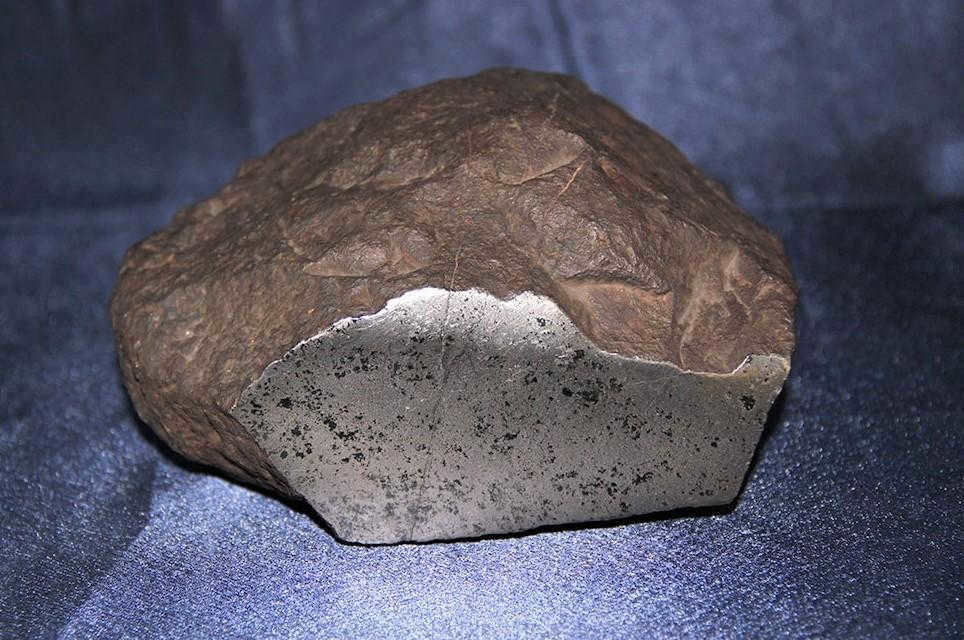
Iron meteorites were once a component of the core of a planet or a large asteroid. It is believed that the latter played a part in the formation of the Asteroid Belt, which is situated between Jupiter and Mars. On our planet, these materials are considered some of the heaviest and possess a strong magnetic attraction. In fact, iron meteorites are significantly more massive than regular rocks. Their weight can be likened to that of a cannonball or a steel plate.
Form of stone
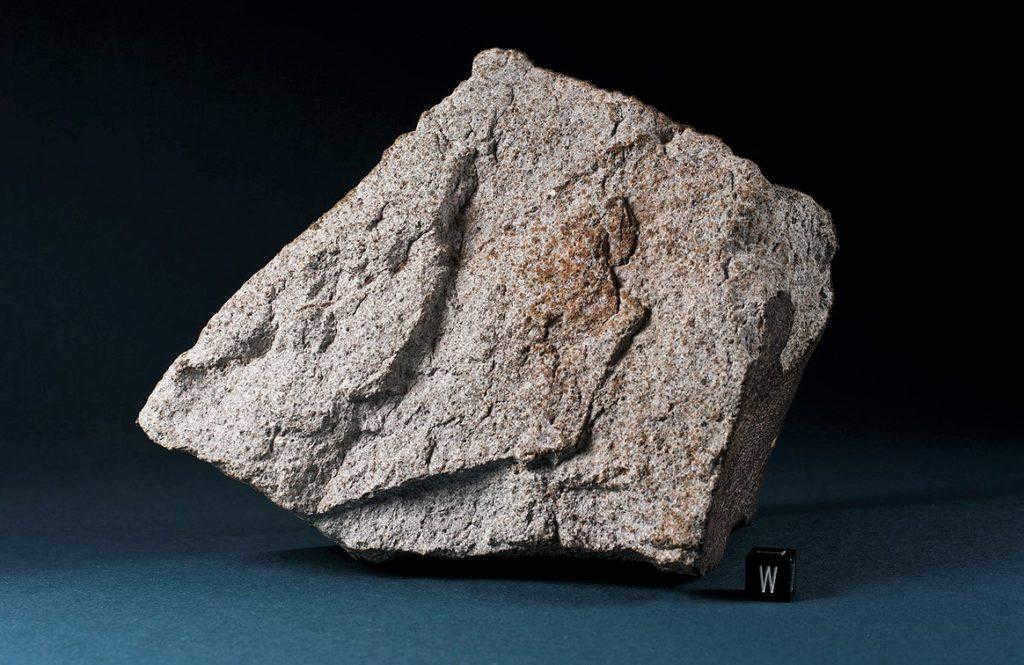
Stone meteorites, one of the largest categories of meteorites, are created from asteroids or the outer crust of planets. Many stone extraterrestrial objects go unnoticed on Earth because they closely resemble familiar rocks. It takes a trained eye to differentiate between Earthly materials and meteorites. These celestial solid bodies are recognizable by their black hue, which is acquired during their journey through the atmosphere.
Stone-iron variety
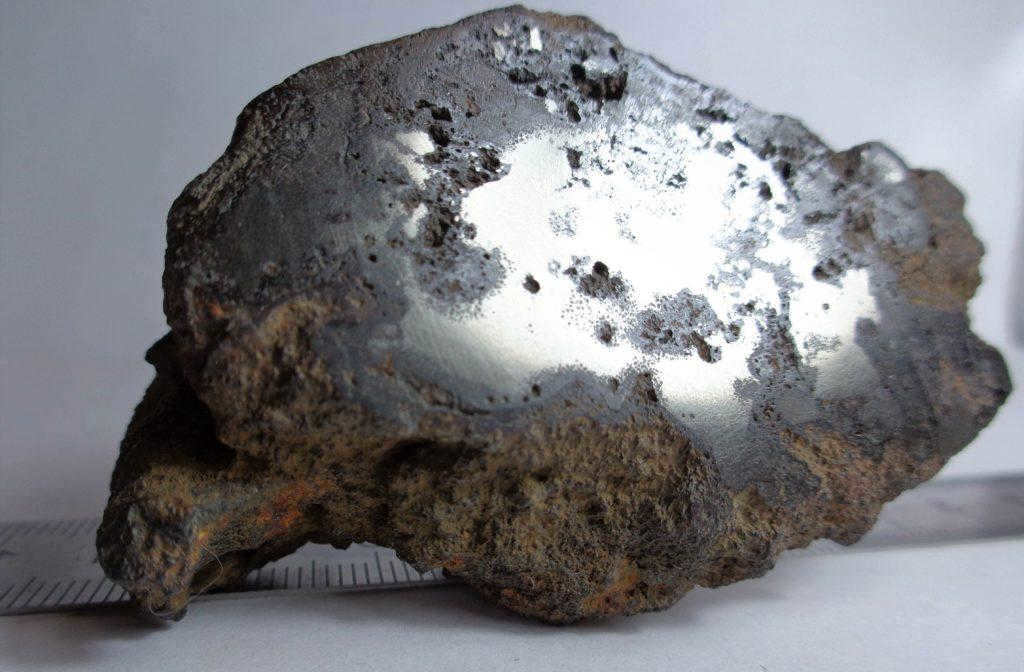
Stone-iron meteorites are the rarest type of meteorites, accounting for only 2% of the total number. These celestial bodies are composed of equal parts rock and iron, and can be further divided into mesosiderites and pallasites. Stone-iron meteorites form at the boundary between the mantle and crust of their parent bodies.
Among collectors, pallasites are the most highly sought-after specimens. These meteorites have a matrix of iron and nickel, with olivine filling the gaps. If the olivine crystals are pure and have a green color, they are considered gemstones known as peridots. The smallest group of stone-iron meteorites is made up of mesosiderites, which have an attractive appearance and consist of nickel and silicates.
What sets a meteorite apart from a meteor, bolide, comet, and asteroid?
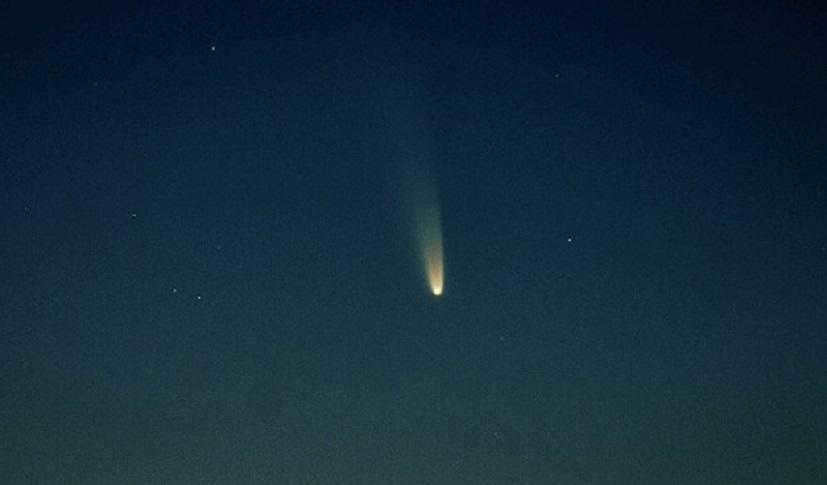
Photo of comet NEOWISE
It is not unusual for a meteorite to be misidentified as a bolide, meteor, or asteroid. In order to comprehend the classification of celestial objects, one must delve into their characteristics.
- Meteorites are cosmic bodies that have successfully traversed a planet’s atmosphere and landed on its surface.
- Meteors are small fragments of space bodies, typically no larger than a few centimeters. These particles enter the atmosphere at high speeds and burn brightly, resembling a shooting star.
- A bolide is a relatively bright meteor. Behind this fiery ball, a trail of smoke may be visible. The passage of a celestial body is often accompanied by a loud noise and frequently culminates in an explosion.
- Asteroids are rocky objects found in space that are not active. They are typically located between the orbits of Mars and Jupiter, with some extending beyond Pluto’s orbit in the outer belt.
Origin of Meteorites
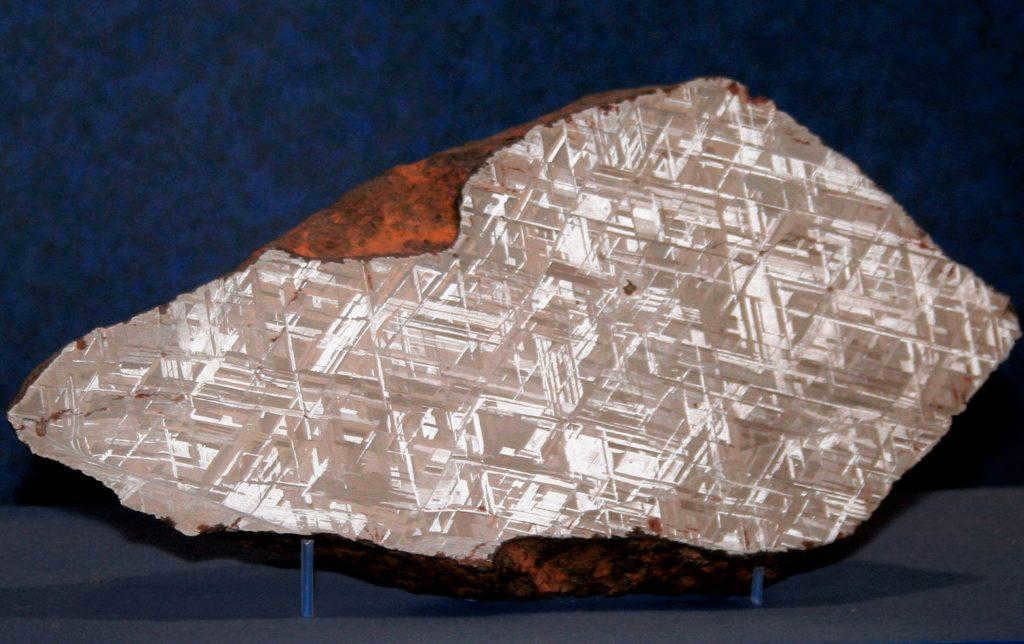
Widmannstätten figures on a cross-section of a meteorite
After examining the chemical and other compositions of meteorites, scientists have deduced that they are fragments of large celestial bodies within our solar system. These parent bodies have a radius of approximately 200 km, which is comparable to the size of the largest asteroids. The analysis is based on the cooling process of iron meteorites, which results in the formation of various alloys with nickel that create the unique Widmannstätten figures.
The suggestion is that the stone meteorites originated from small planets devoid of an atmosphere and marked with craters, resembling the Moon. Nevertheless, it is important to observe that the composition of the meteorites and the Earth’s satellite samples differ considerably. This indicates that the meteorites did not originate directly from the Moon.
Fascinatingly, through analyzing photographs of the meteorites’ flight, scientists deduced that they originated from the asteroid belt.
Shooting Stars
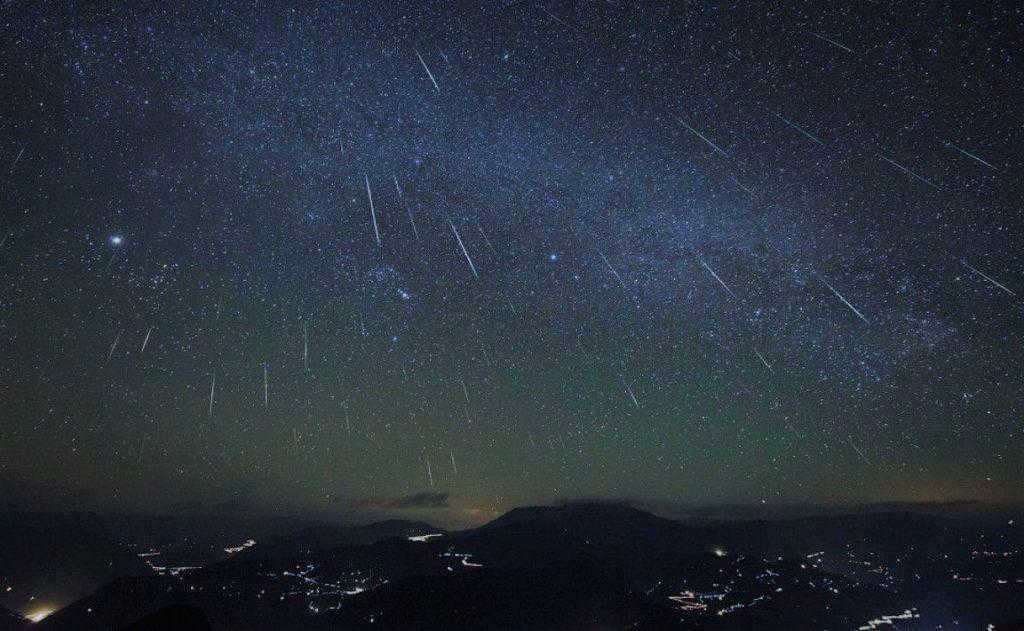
Picture depicting a meteor shower
When a meteorite enters the Earth’s atmosphere, it starts to break apart. Numerous fragments then descend upon the planet, resulting in the formation of craters. This fascinating occurrence is often referred to as a meteor shower, which is sometimes mistaken for a meteor shower. The distinguishing factor is that meteors never make contact with the Earth’s surface, whereas fragments of a meteorite have the potential to cause substantial destruction.





